Leaving Muscat behind and driving towards the Hajar mountain range sees an exciting change in scenery and a much deeper dive into history. What has long been referred to as Oman’s Interior is a picturesque region steeped in tradition and reflective of the centuries of imam rulings who contested the Sultan’s authority in Muscat. It’s one of the most visited parts of Oman, partly due to its proximity to the capital but also to the presence of three of the country’s most famous forts, some splendidly verdant oasis, crumbling villages and mountain ranges rising up amidst all this.
Bahla Fort – the biggest fortress in Oman.
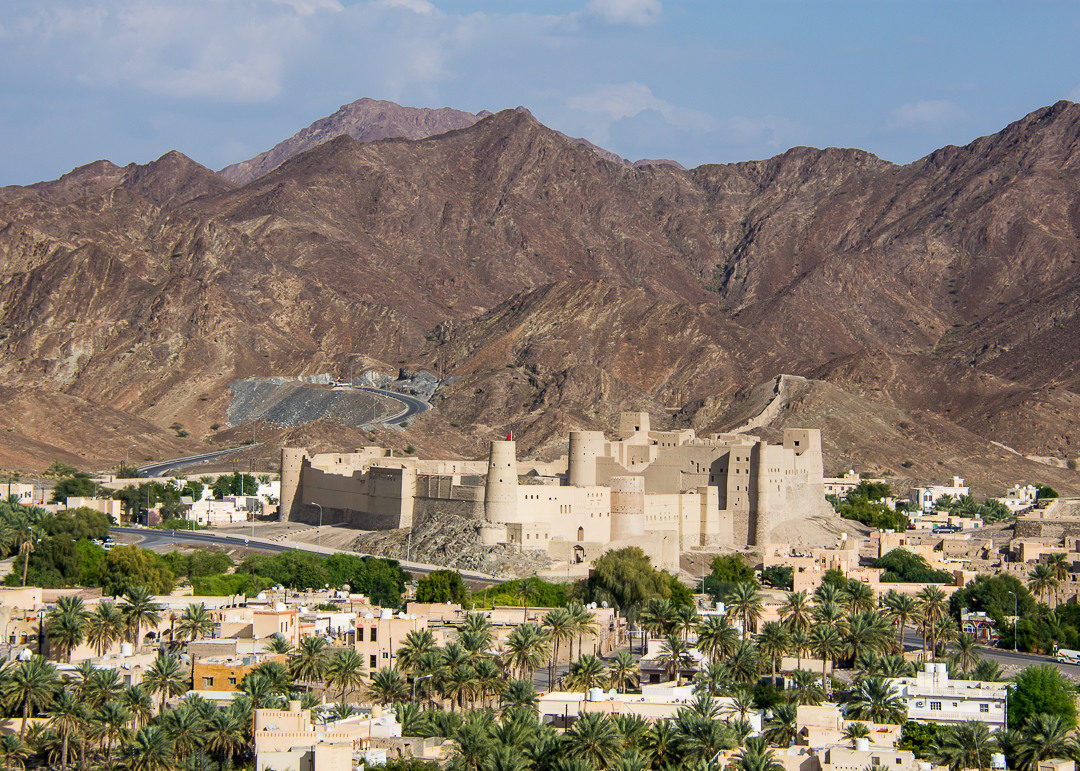
The best launch pad to explore the region is Nizwa, one of the oldest cities in Oman and the long-time capital of the Interior. Famous for its handicrafts and silver, a stop at the souk is a must even if you don’t intend to buy anything.
A cute little square stacked full of pottery is only the beginning of the browsing possibilities, shops all around offering heaps of dusty jewellery, battered old riffles and daggers, dates, perfume, amulets, etc
An older section of the souk, the East Souq, was definitely more up my alley…
This is where you’ll find the spice shops next to what looks like the local equivalent of hardware stores along a short but very old alley, the heart of the traditional souk before they moved it to more modern digs next door.
Bulk grains, nuts and spices fill the air with wondrous aromas and give the best picture of Oman’s main ingredients.
Step inside for even more goodies: perfumes, teas, rose water, pre-packaged snacks, …
…and beautiful, top quality Iranian saffron.
Time for a coffee break, a favorite pass time here which Omanis partake in many times a day. The strong, bitter coffee (kahwa) is flavored with cardamom and always served straight with dates to help counterbalance the bitterness.
The main attraction in Nizwa is right next door, overshadowing the souk with its humongous walls – Nizwa Fort.
Dated from the 17th century, the fort was successful in defending the city against invaders and remains a really well-preserved landmark worth walking through.
Its vast circular tower stands proudly above town and you should climb up the 30m to the top.
You will be rewarded with 360º views of Nizwa and the surrounding landscape from standing on the ramparts.
Back down, you can wander around and explore the labyrinth of rooms and hidden corners.
Moving on to the next fortress – Jabreen Castle – a bit further away, where an entirely different experience awaits. The finest of Oman’s castles was originally built during the late 17th century as a home for the Imam and his family, later becamoming a bastion during wartime and subsequently functioning as a retreat for scholars.
The impressive restoration work highlights the flourishes and craftsmanship the castle is known for.
Wandering through the castle, you’ll go from one shadowed room to the next, marveling at the architectural details especially in the Hall of the Sun and Moon below on the left.
The famous painted ceilings with their carved wood beams are among the most beautiful in the country.
Painted in floral motifs, they seem to be attempting to rival the patterns of fine Persian carpets.
Stacks of books elegantly displayed remind the scholarly use of the premises.
Taking a peak through a window, there’s a solid reminder of the military aspect of the castle in this northwest gunnery tower.
One of my favorite part though was this stairway leading up to the upper rooms with its series of vaulted arches, pale white and adorned with colorful carvings before ending in a sea of white like a heavenly canopy overhead.
There are two open courtyards, the one below allowing a little glimpse of the sky while being drenched in shade.
The other is graced by elegant balconies with carved wooden railings and beautiful arched windows.
Make your way to the rooftop for a view over the serene rural surroundings. This is where you’ll also find one of the mosque and the Qu’ranic schoolroom.
Back downstairs standing at the bottom of that beautiful courtyard is the castle’s kitchen and storage rooms.
Some of the original kitchen equipment is on view.
A narrow passage from the kitchen leads to a dark and very particular room used for storing dates. There’s still a sweet lingering smell in the air. The wavy floor was to allow the oil from the squeezed dates to flow through a pit where it was collected for kitchen use or defense mechanism (they would pour boiling date oil over their enemies…ouch!).
Once back outside and taking a good look around, what catches your gaze besides the majestic forts are the mountains. Jebel Akhdar, the mountain range which translates as ‘green mountain’, is home to around 58 villages and communities surrounded by green terraces where grapes, peaches, figs, pomegranates, apricots, walnuts, lemons, almonds, apples and desert roses grow, a lot of it being sold at the souk in Nizwa. The climate in the jebel is unique and so are its villages of which you must visit a few to get a good idea of the life here. The government is slowly developing the area to allow for visitors to stay but for now, using Nizwa as a base and driving up the winding roads to the bigger villages is your best option.
One of the most iconic village is Misfat Al Abriyeen (also called Misfah), a medieval village built into a rock face some 10km up the valley floor.
You’ll have to leave the car at the car park and you’ll see why when you start going down the crumbled narrow streets. The tall mud houses might seem in a desolate state but they’re inhabited for the most part and you’ll notice satellite dishes and other signs of modern life.
I loved taking pictures of the doors, all colorful and very distinct from each other, and by far the most aesthetic part of any house. Did you know that in Arabic architecture the door was often the most elaborately decorated feature of a building as it marks the transition from community space—city, town or village—to family space, the home? It is often the only form of artistic expression that the private life of the family projects to the outside world and provides a glimpse of the richness that lies behind the otherwise blank facade.
Making your way down you’ll soon emerge into a green open area, the lush date plantation below the village where the women come to wash their dishes and clothes in the water canals.
Follow the path to peak at the fruiting trees and catch beautiful views over the valley.
It’s a great spot to witness closely the working of the falaj system – an ancient water channel that leads from the source (usually an underground spring) to the fields for irrigation. In many villages it is still part of the essential way of life.
A few kms down from Misfat lies one of Oman’s most attractive and traditional towns – Al Hamra.
The old part of town closer to the date gardens has some of Oman’s most fascinating old mudbrick houses built in the Yemeni style, some still lived in.
Soak in the eerie atmosphere by stepping into one of the numerous side alleys, feeling for a moment like you’ve stumbled upon the prettiest ghost town until a local old man appears out of nowhere, casually walking back home.
Last but not least we managed a quick stop in front of Wadi Ghul, a terrace farming village rendered especially vivid at dusk when the colour of the stone starts to come to life.
If you have time, the nearby mountains hide spectacular gorges and ravines and today a few tour companies are leading trekking trips to breathtaking heights, nearby Jebel Shams (the tallest mountain in Oman) standing tall at 3,048m above sea level.
Spend the night at one of Nizwa’s few hotels like the small Falaj Daris Hotel, a cute mid-range option set around two attractive courtyards with tropical trees, heated pools and a mountain backdrop.

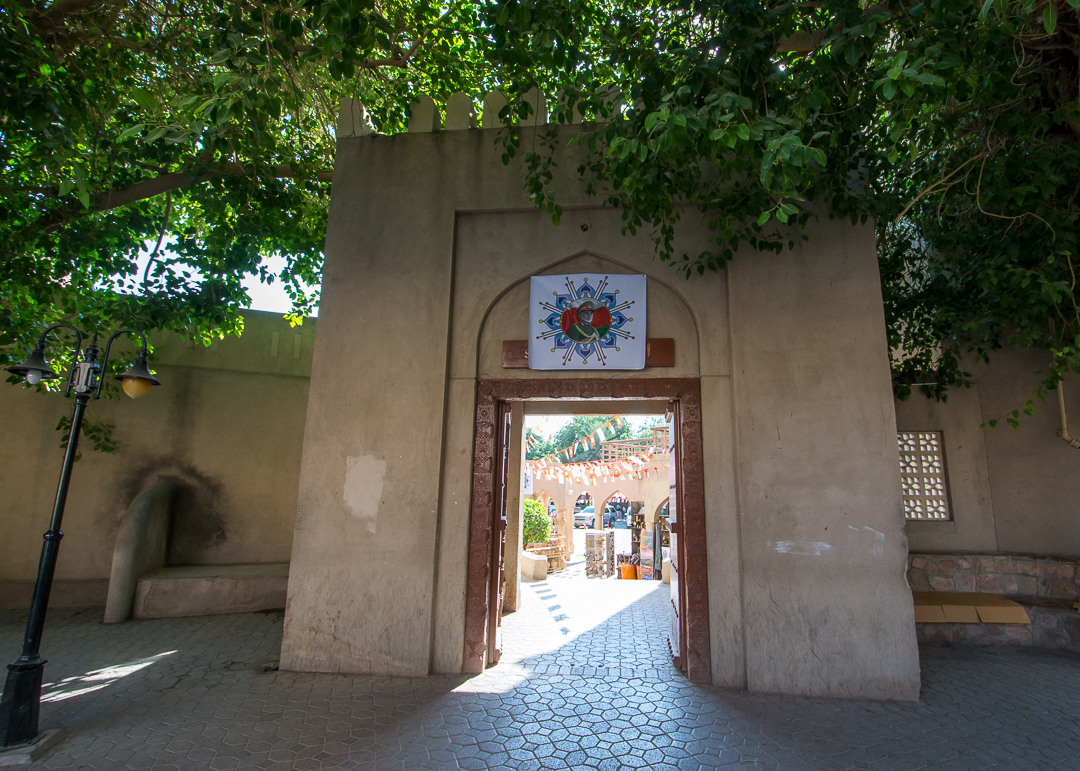
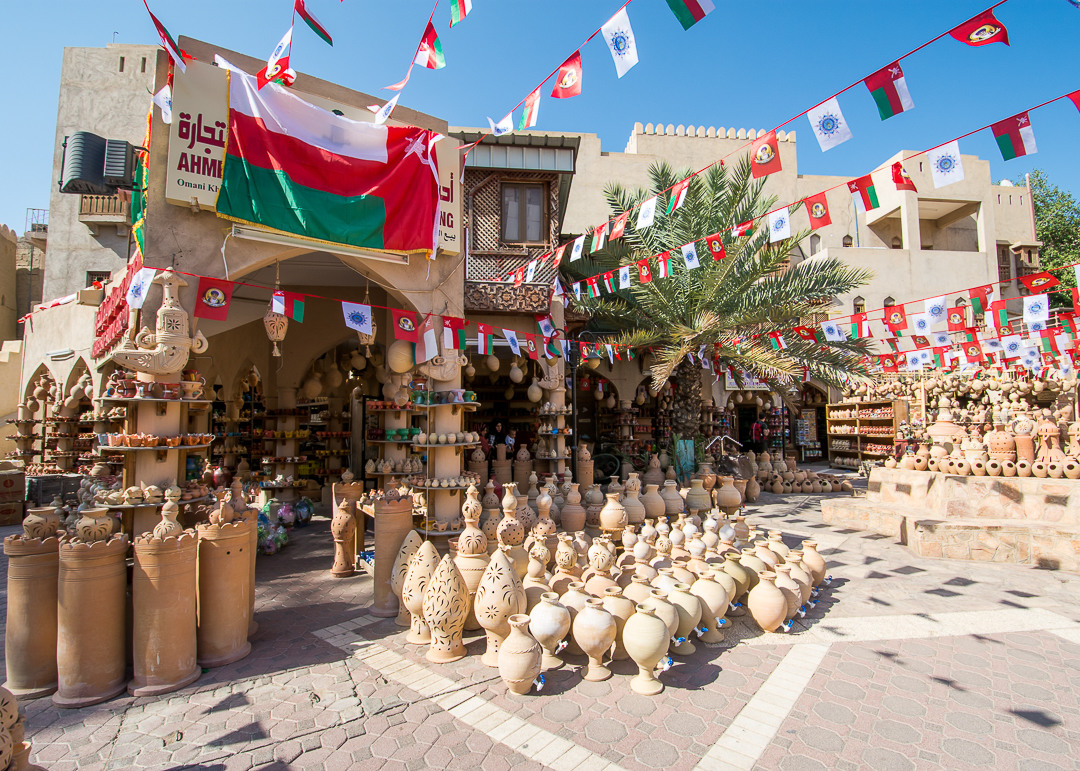
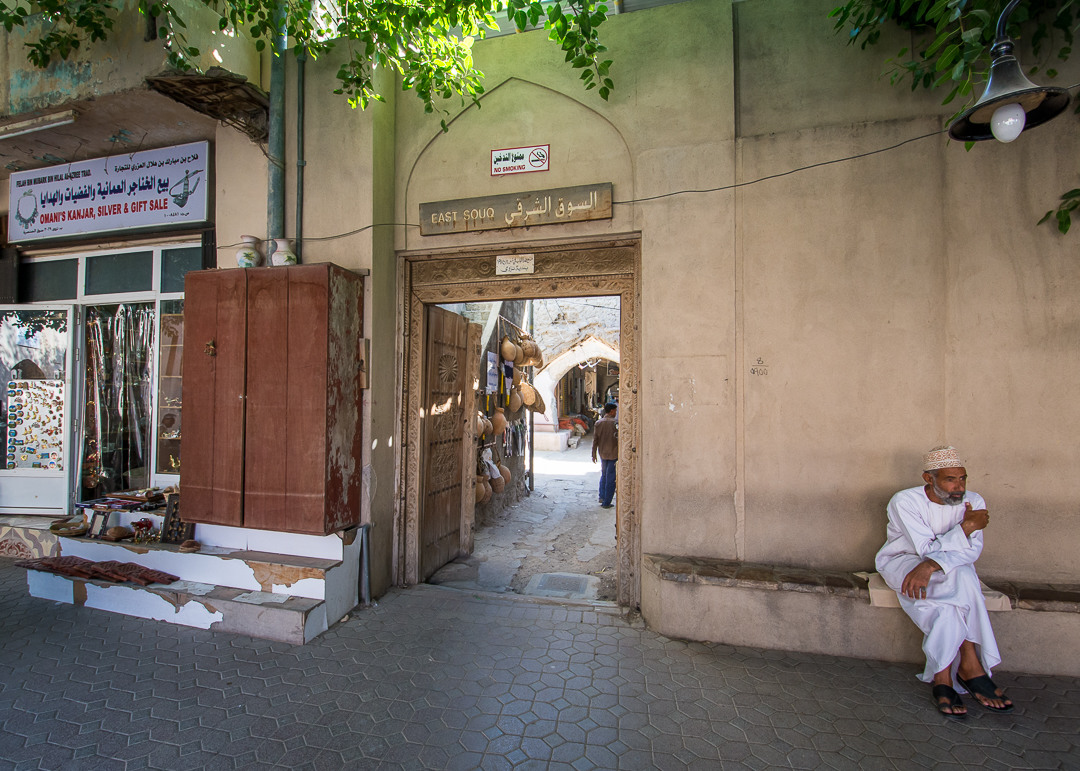
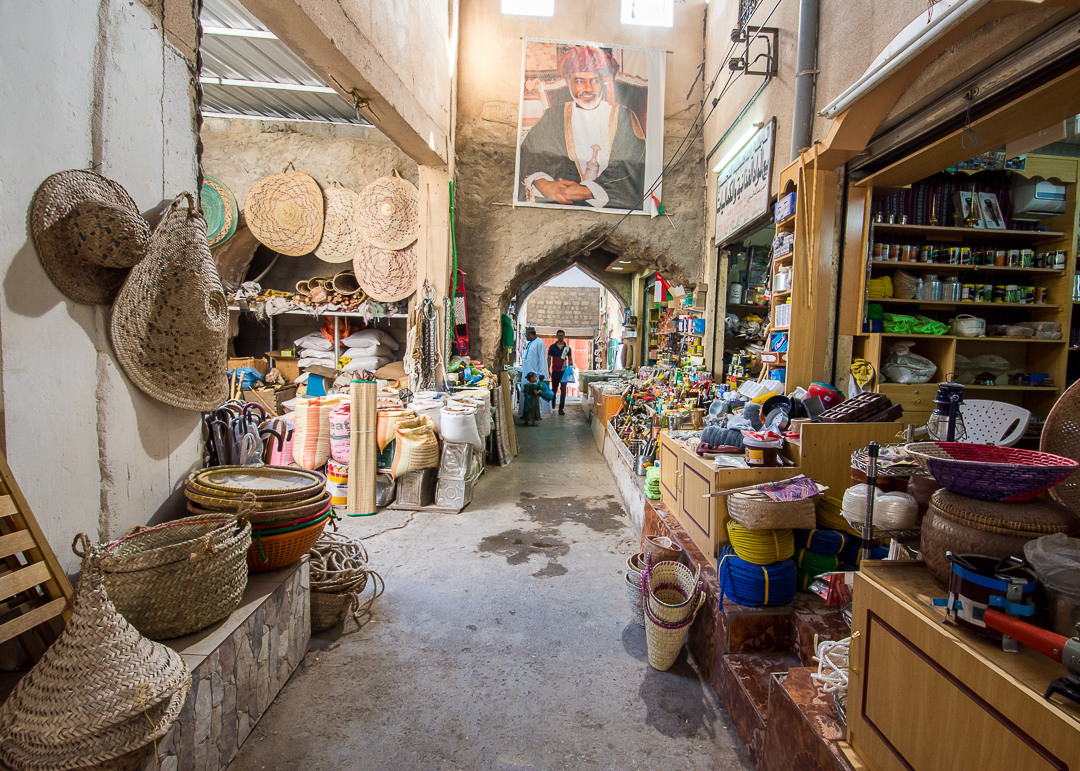
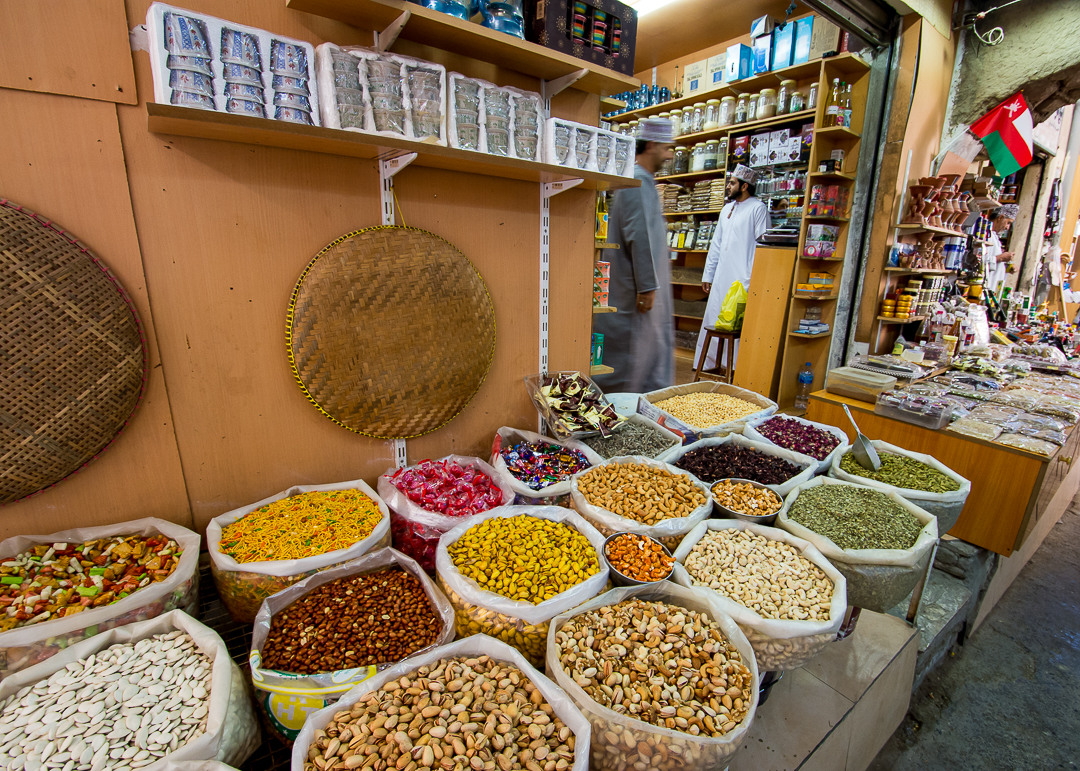
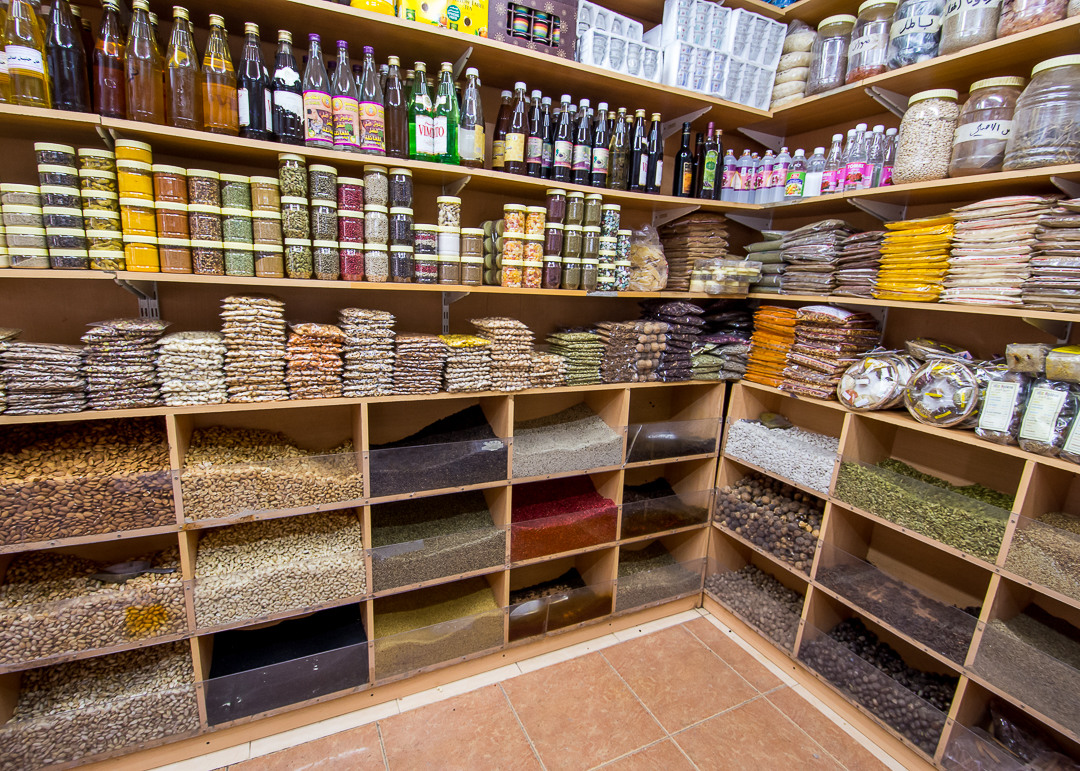
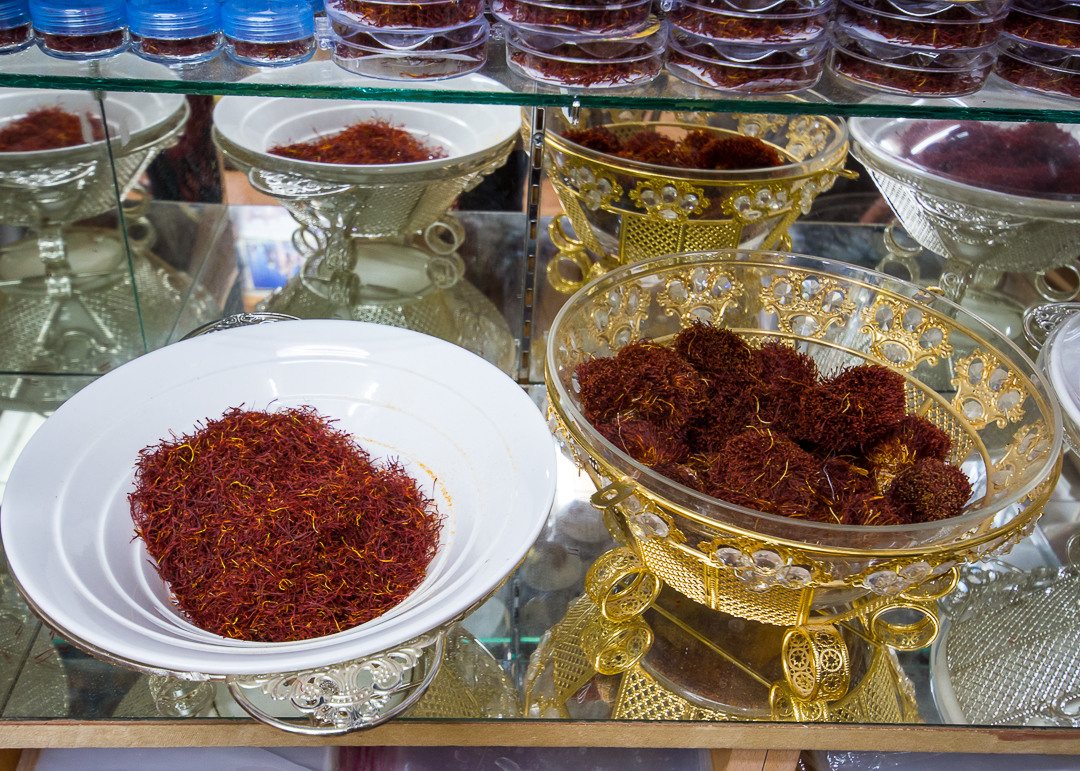
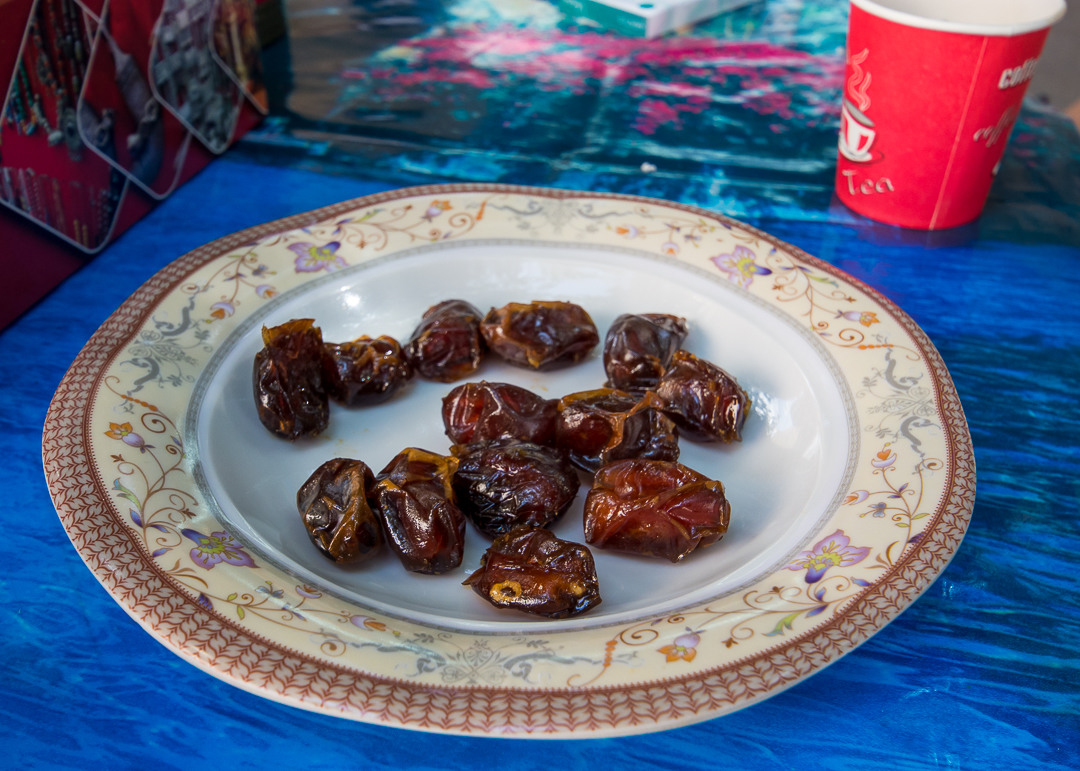
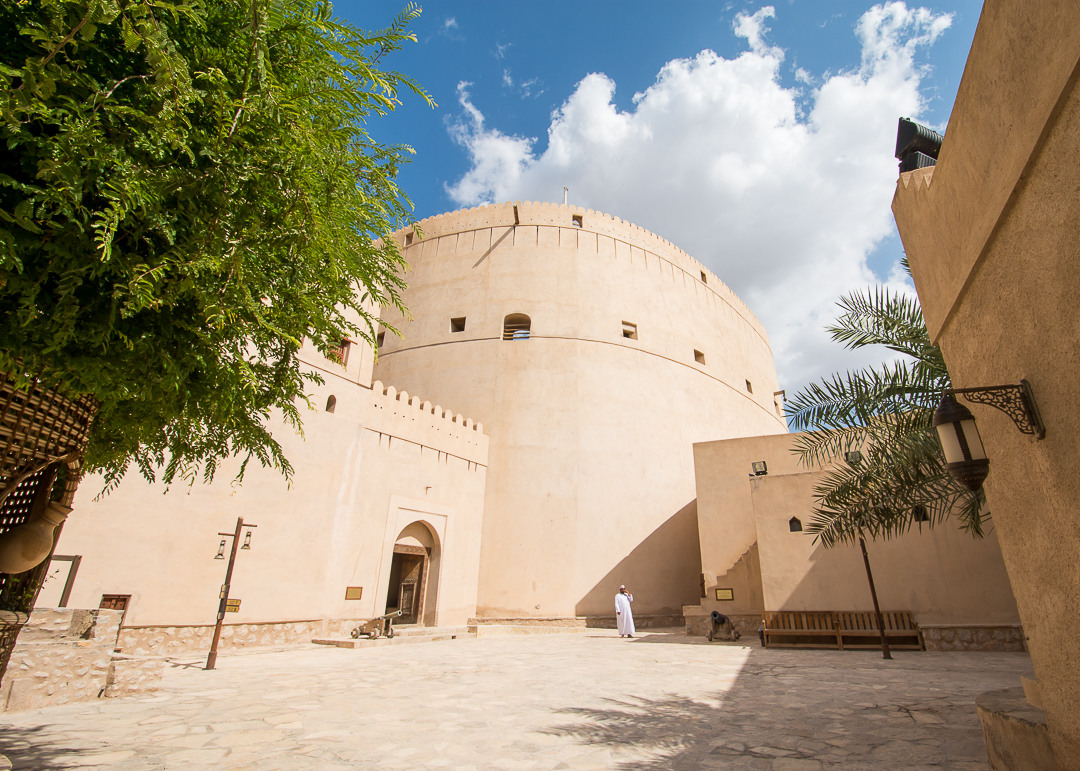
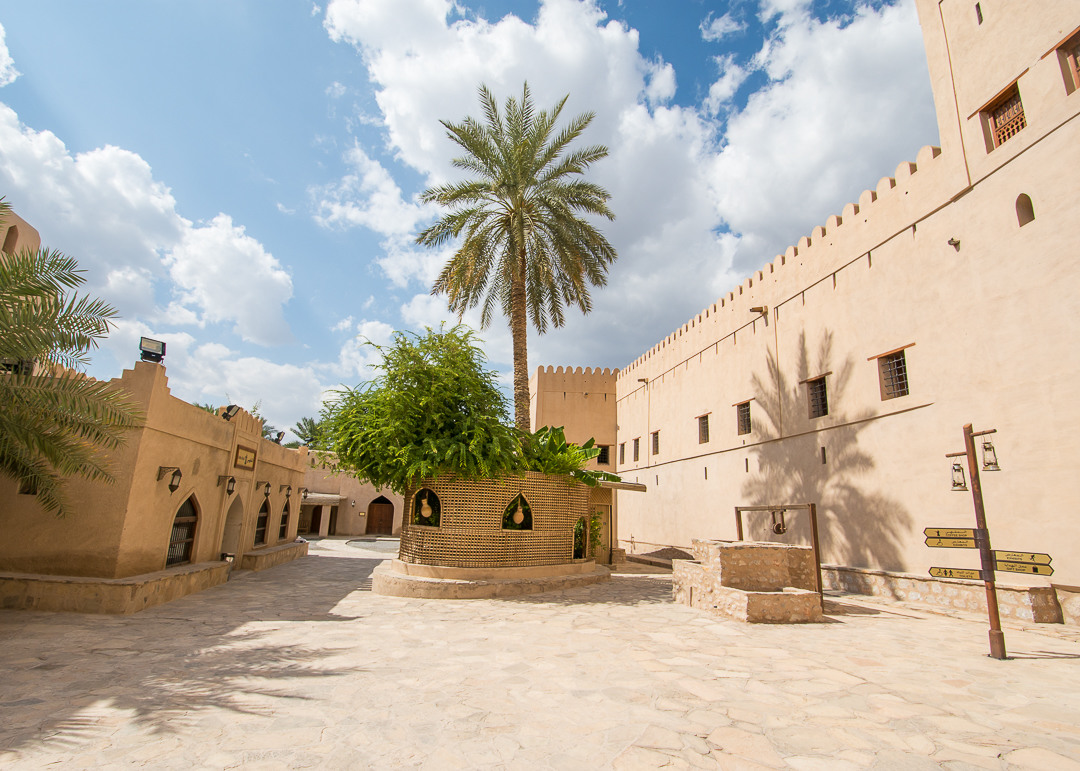
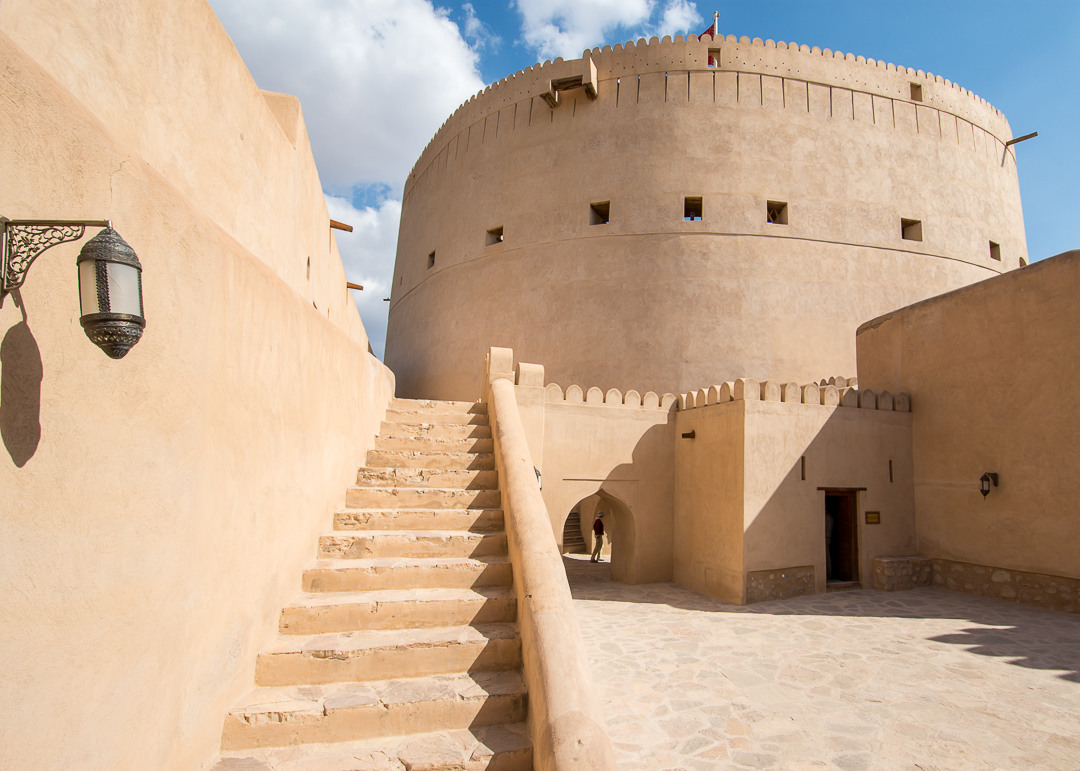
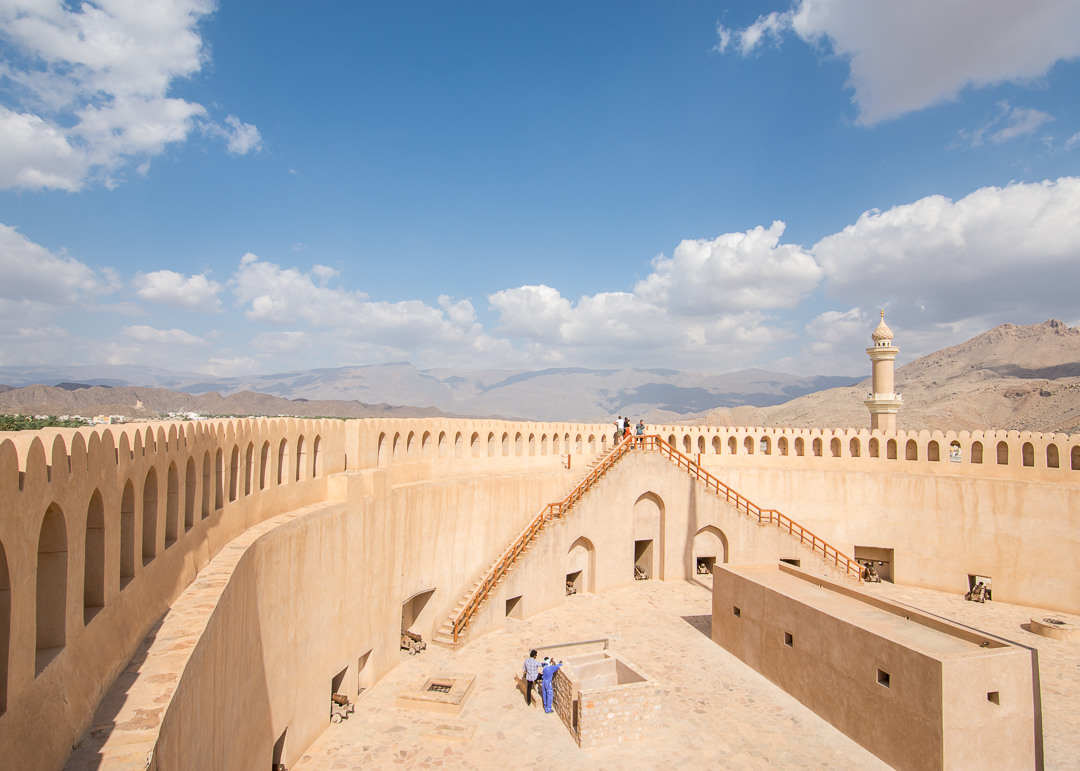
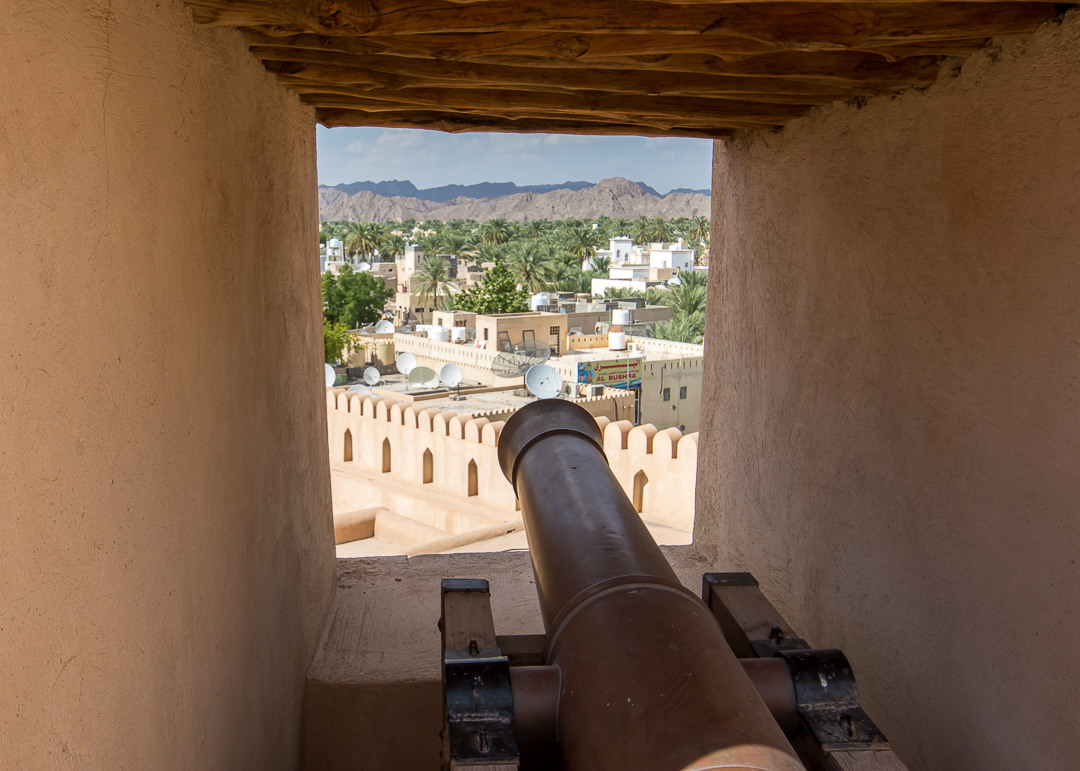
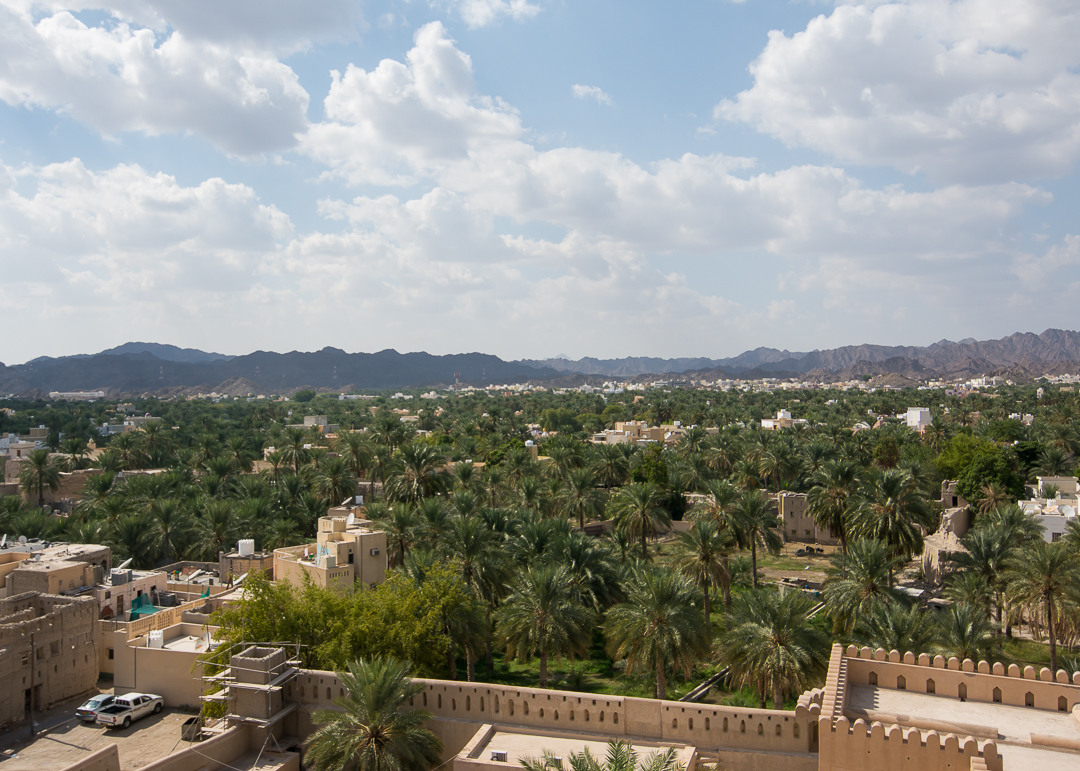
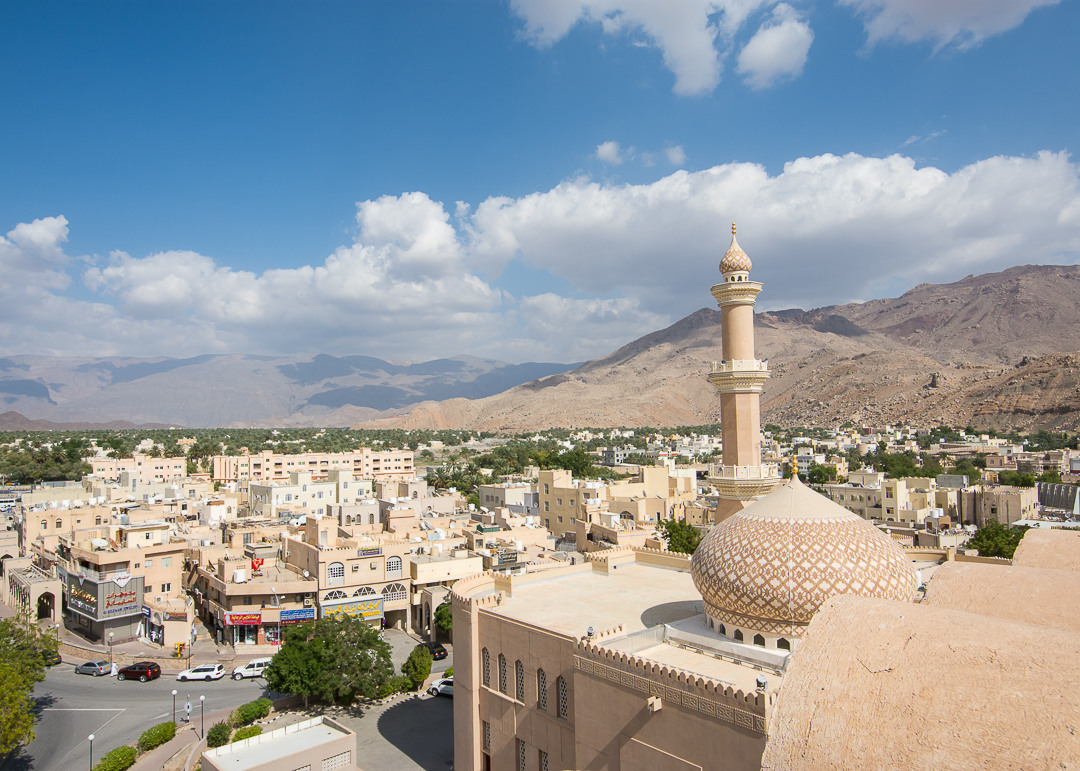
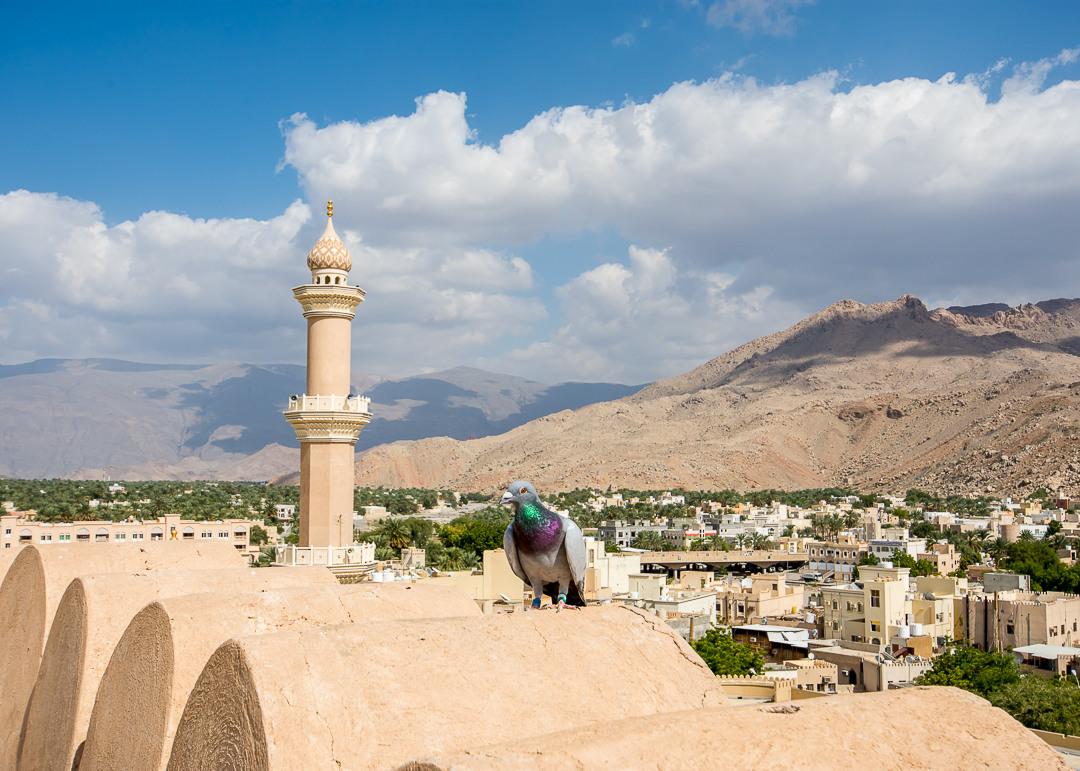
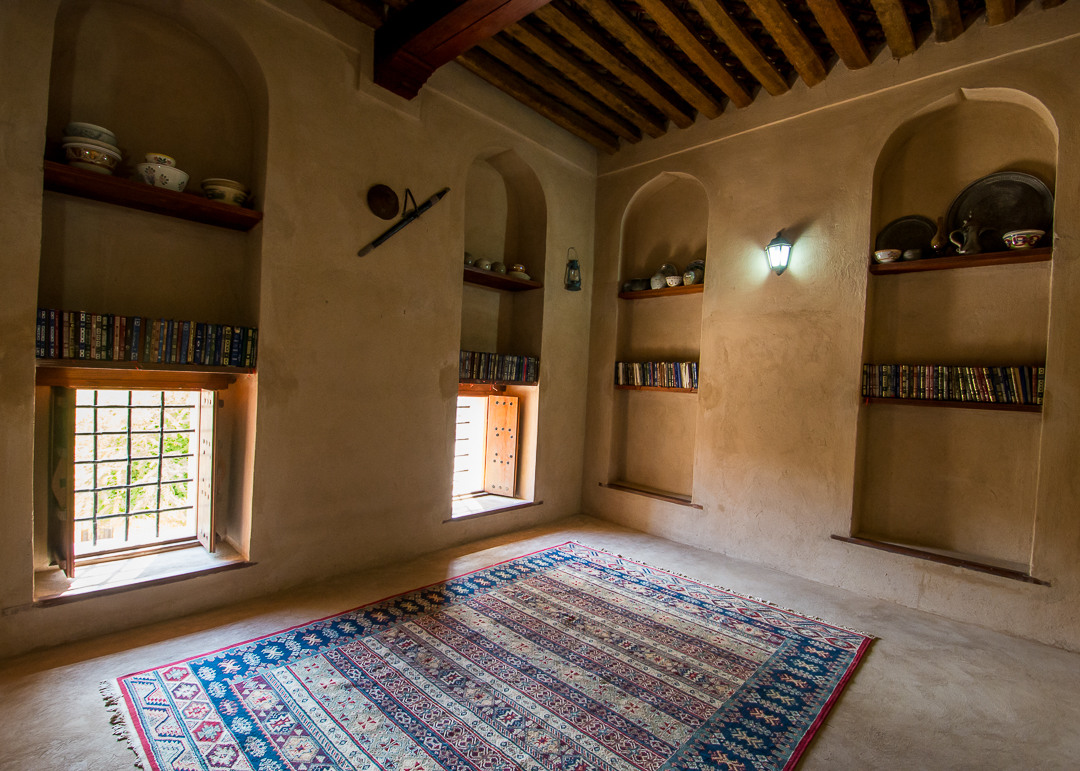
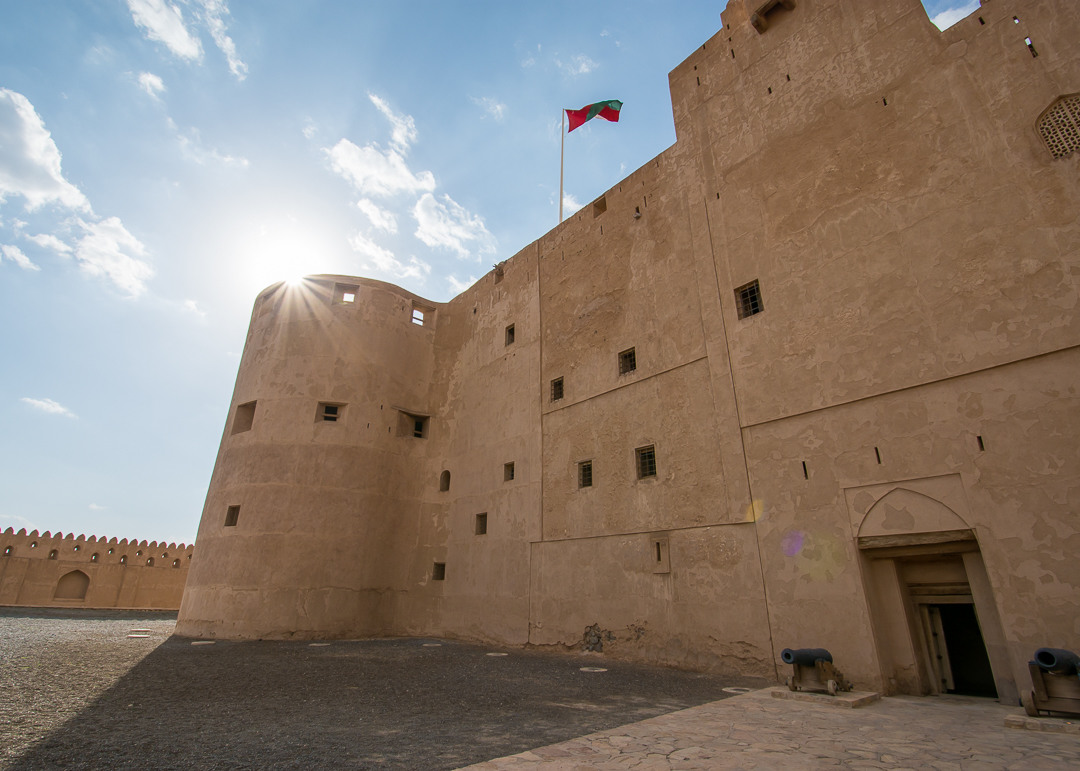
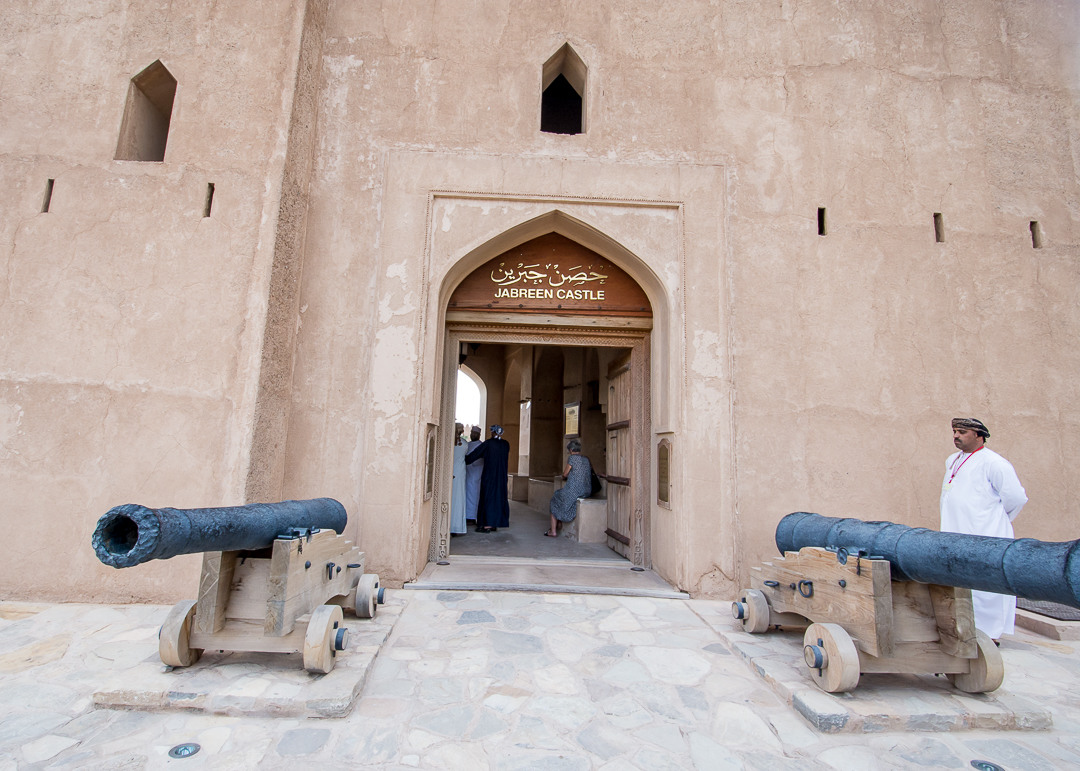
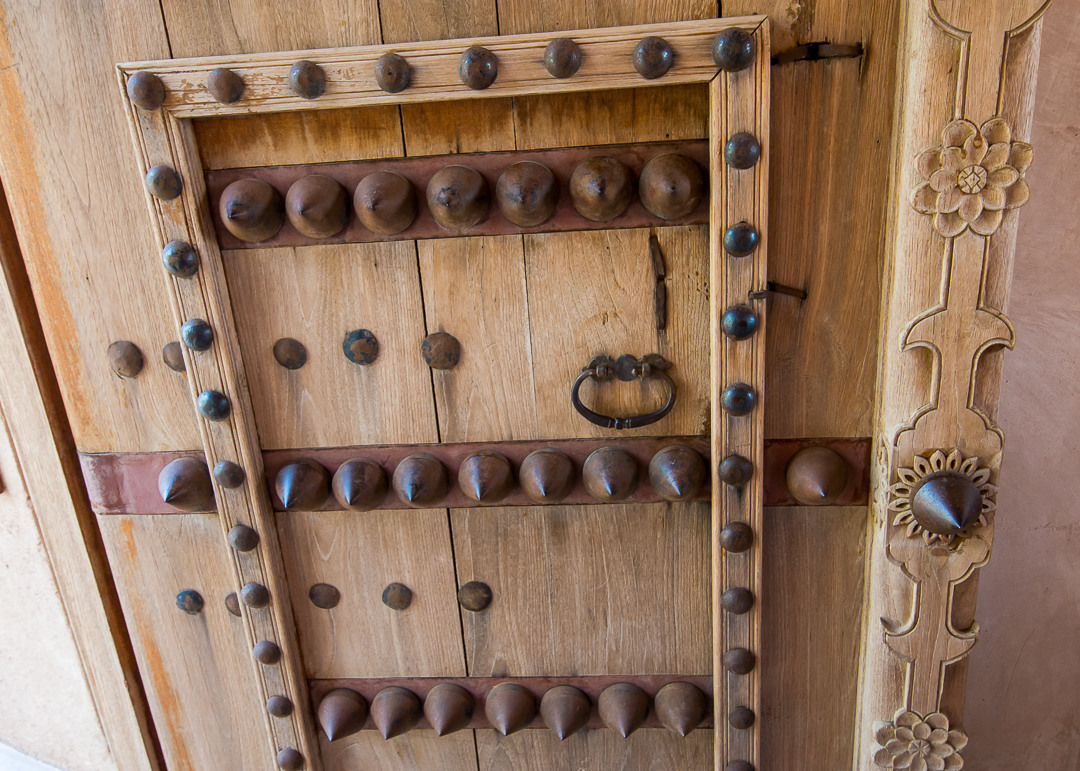
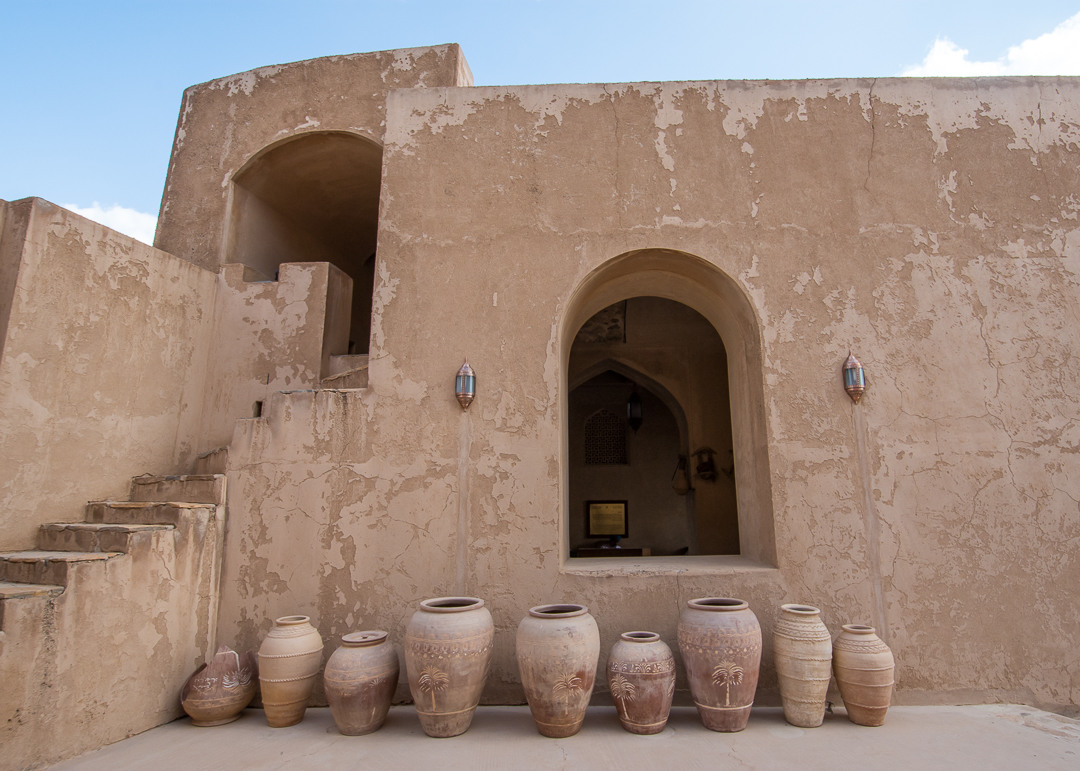
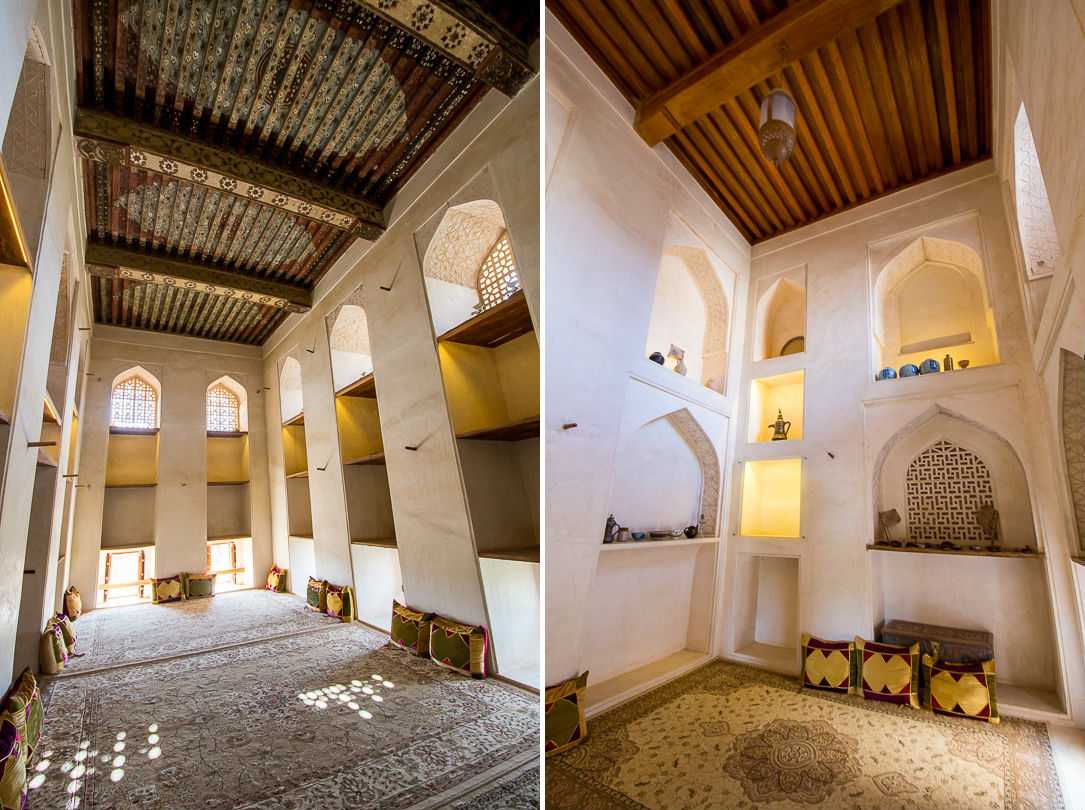
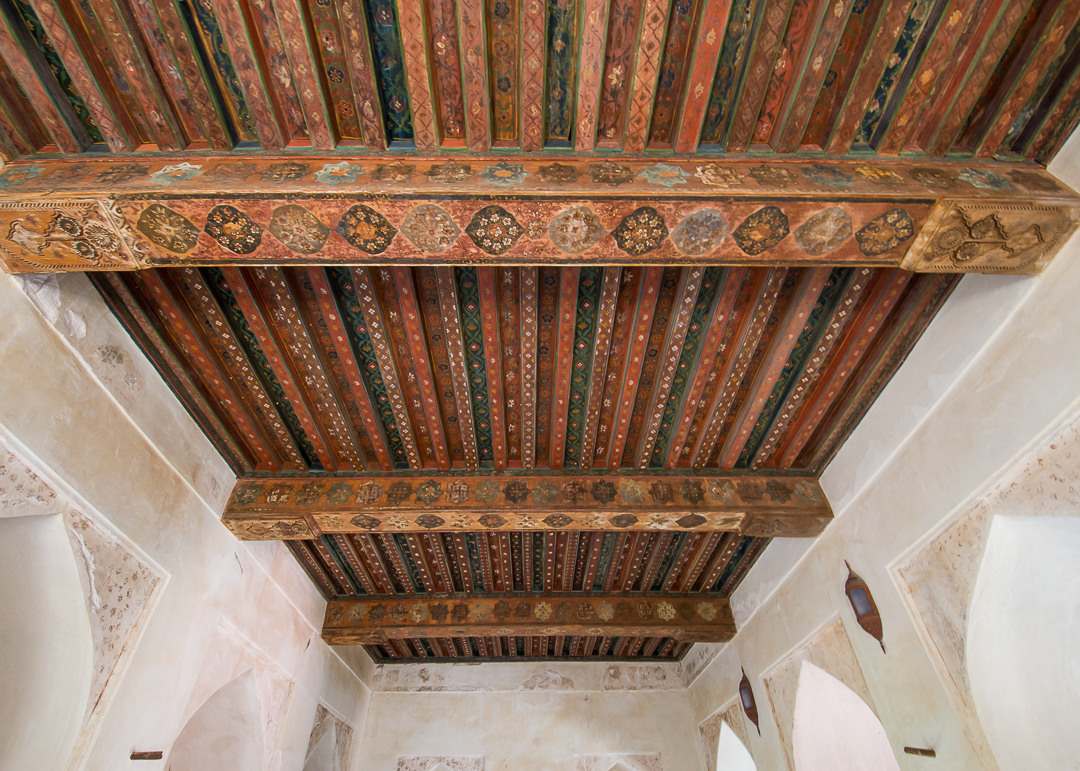
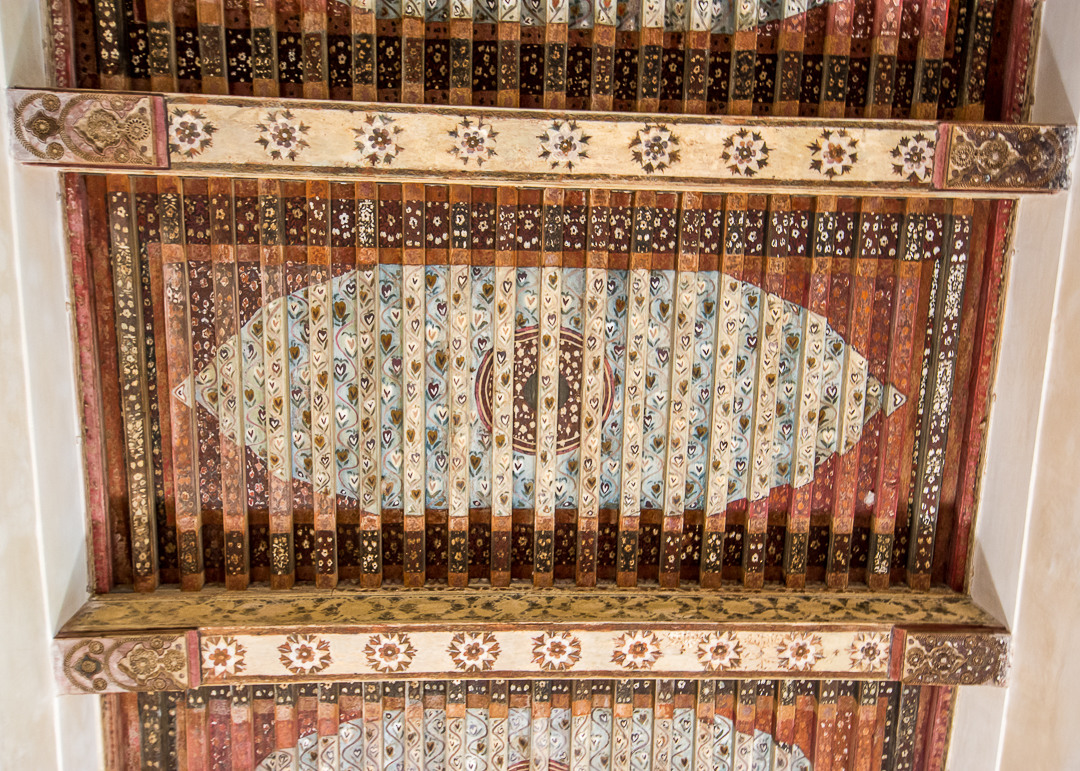
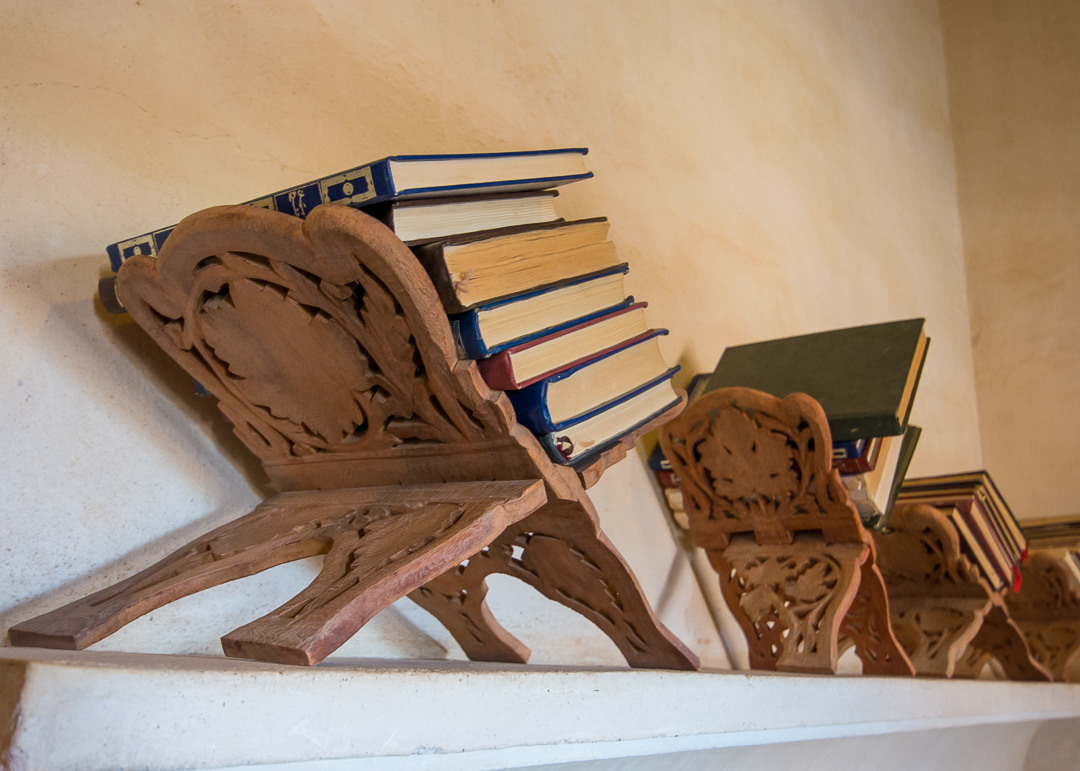
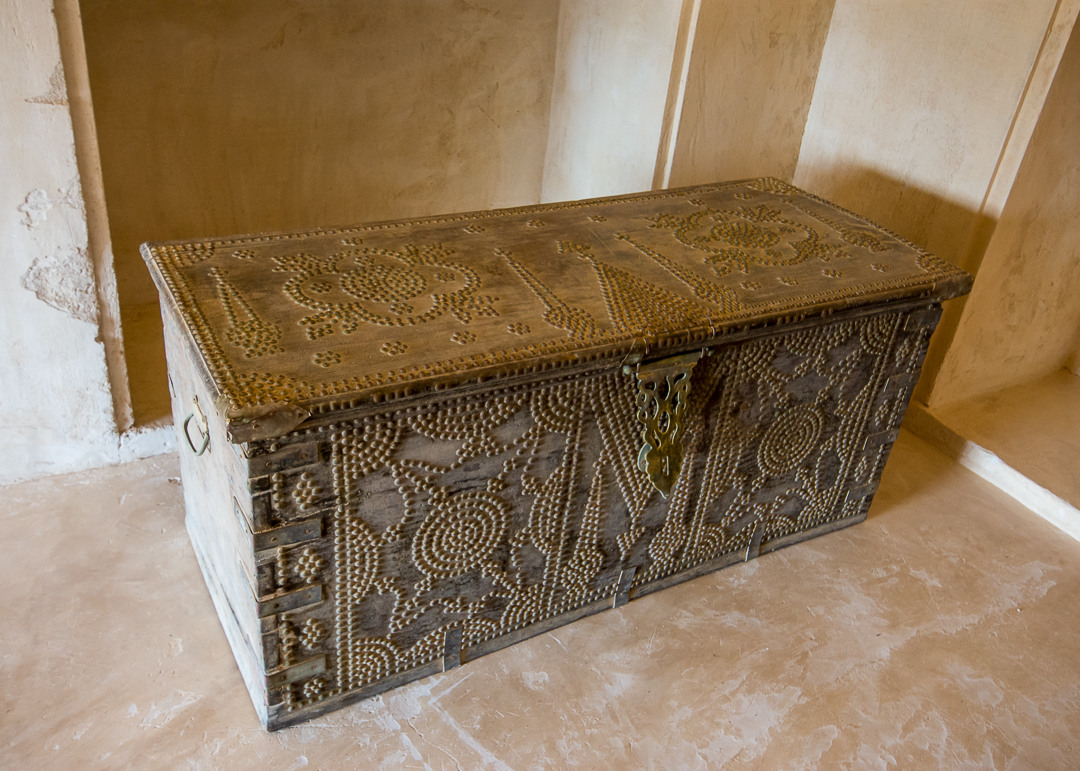
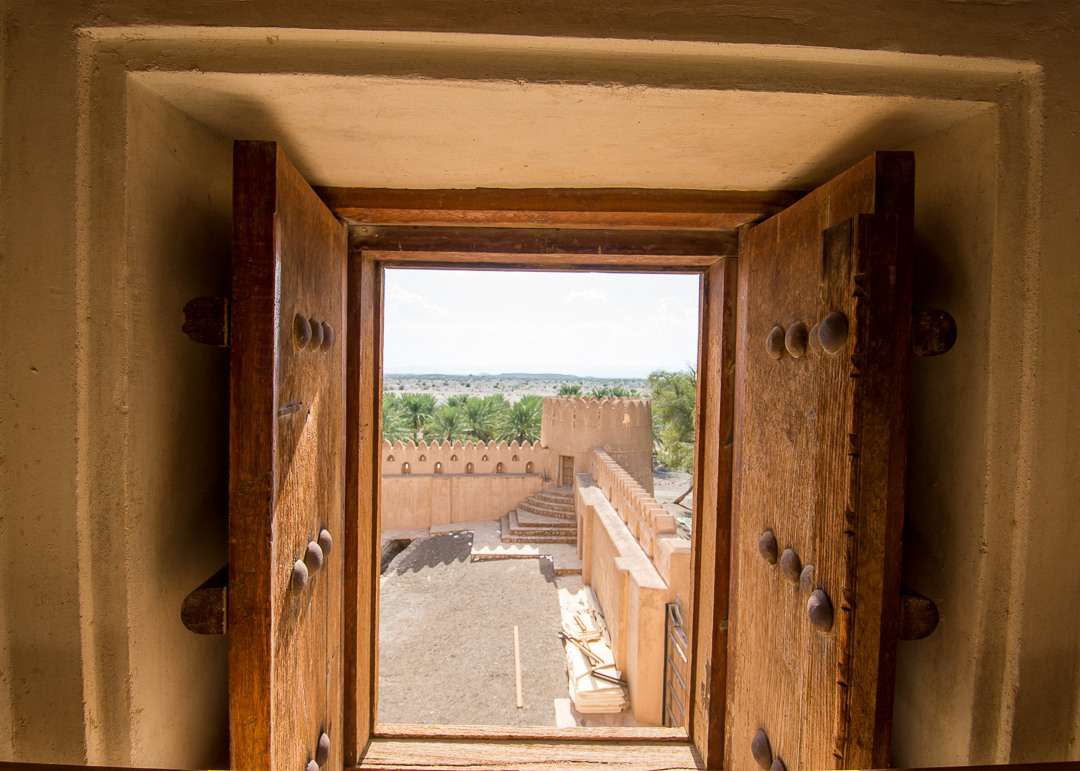
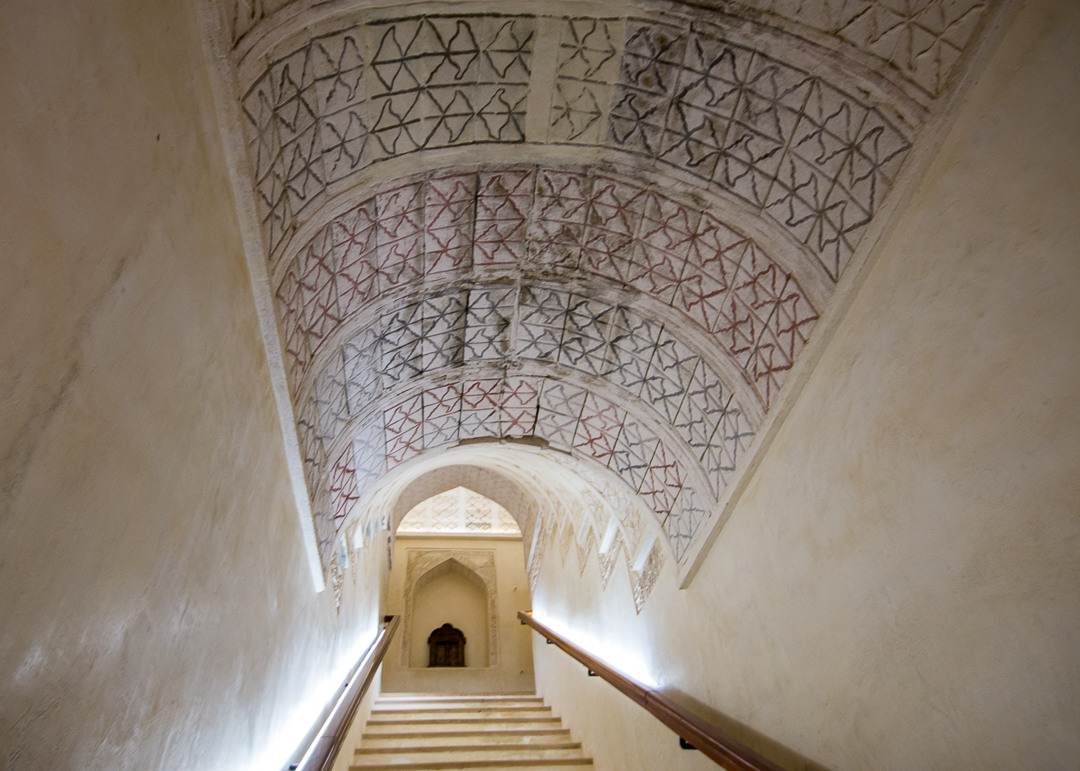
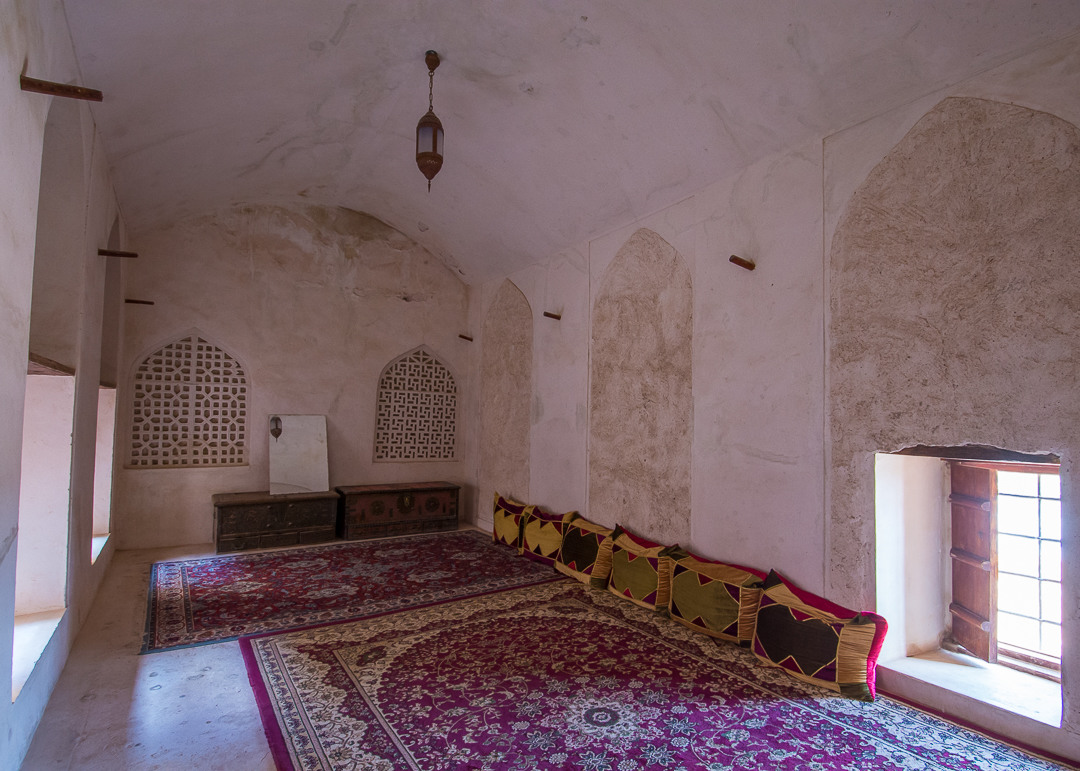
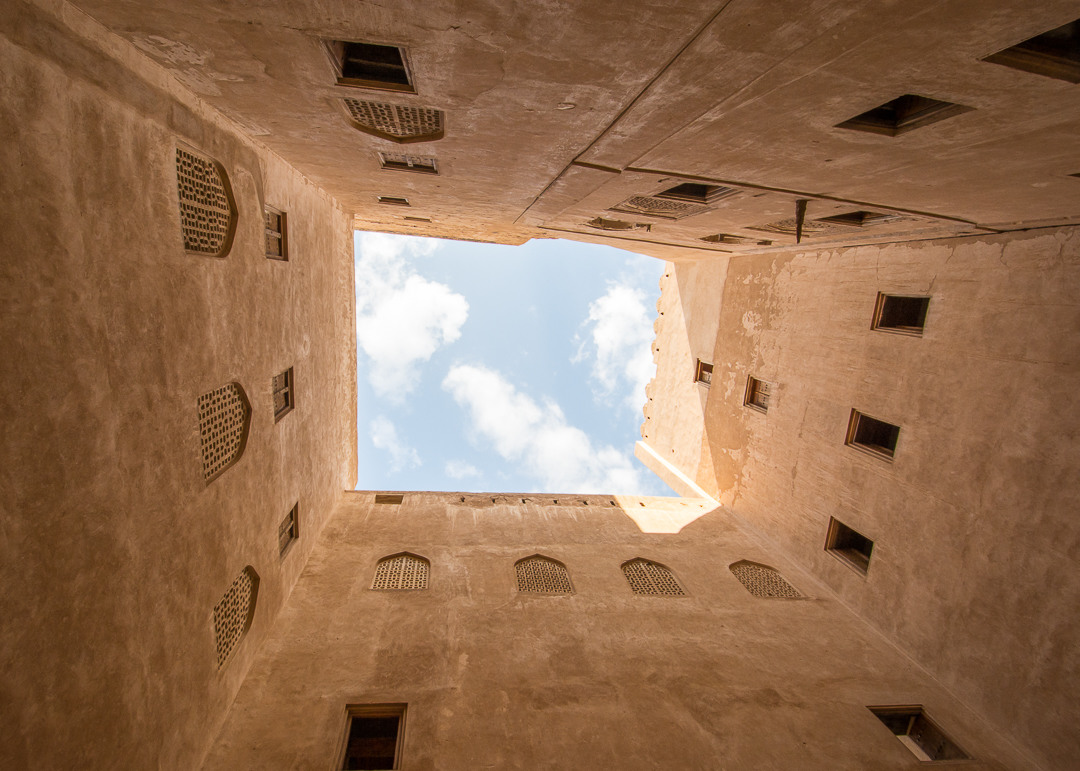
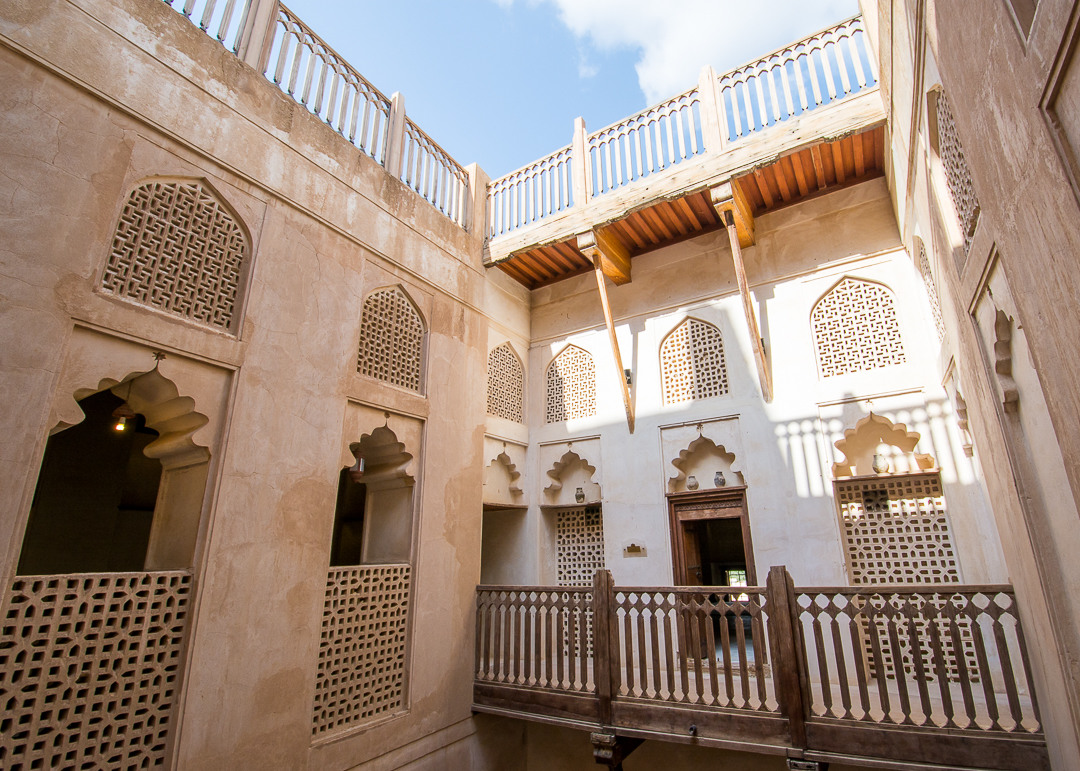
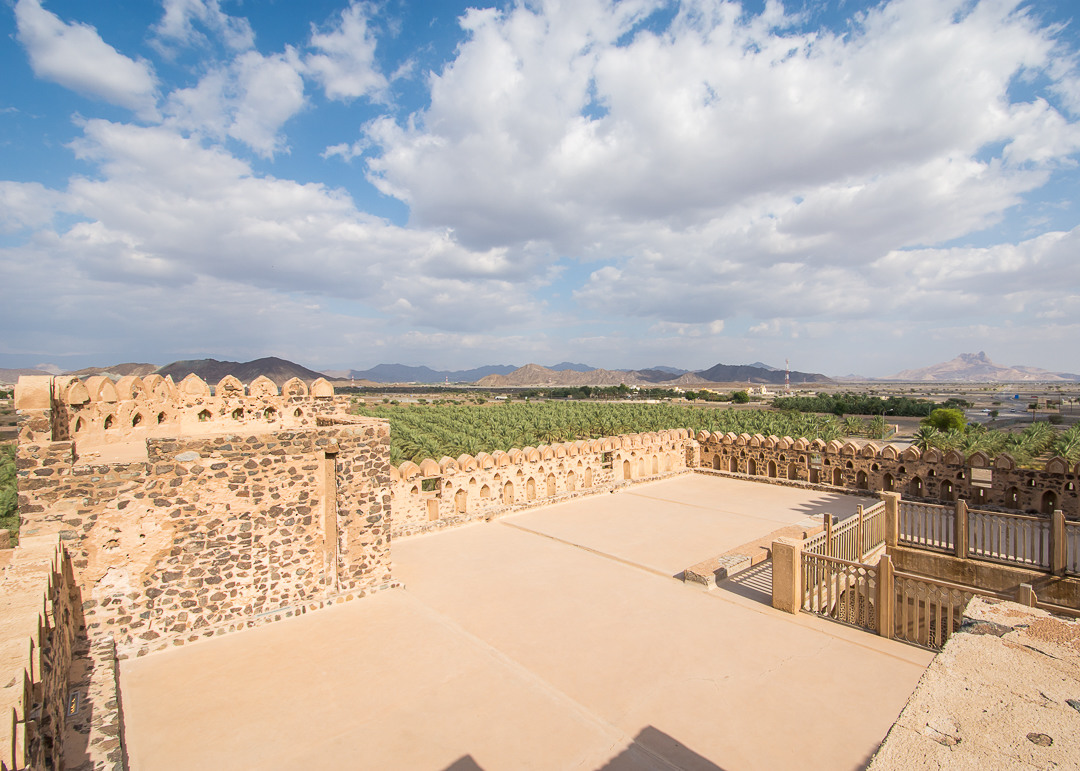
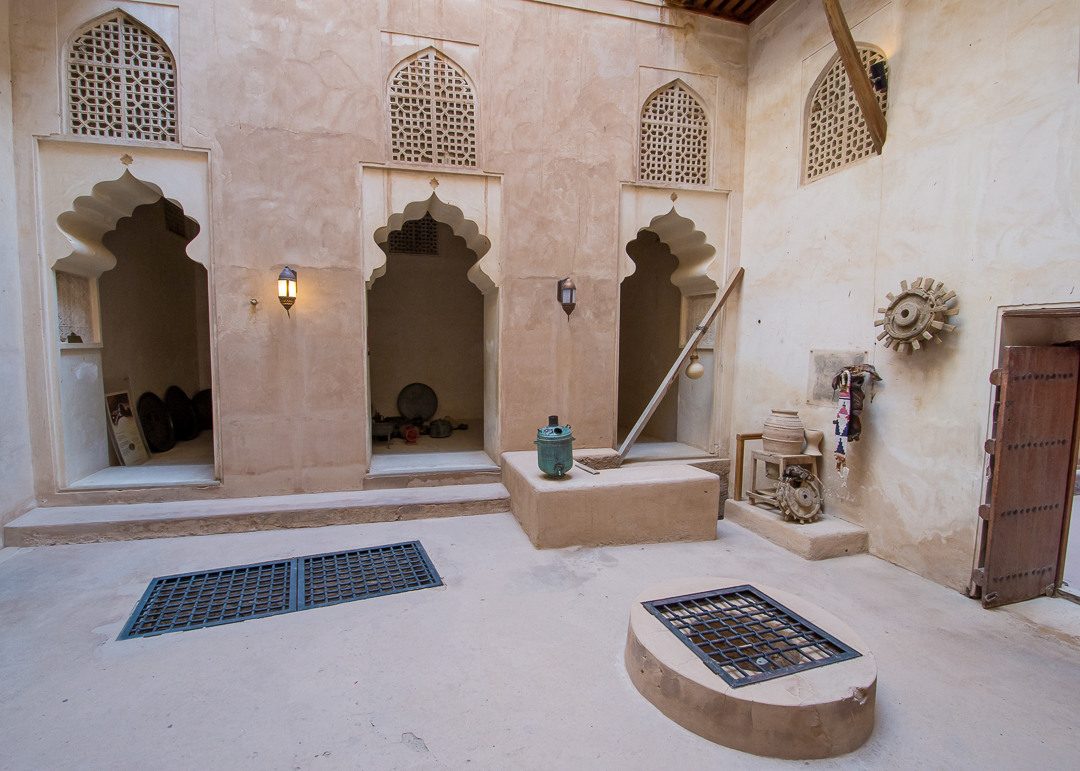
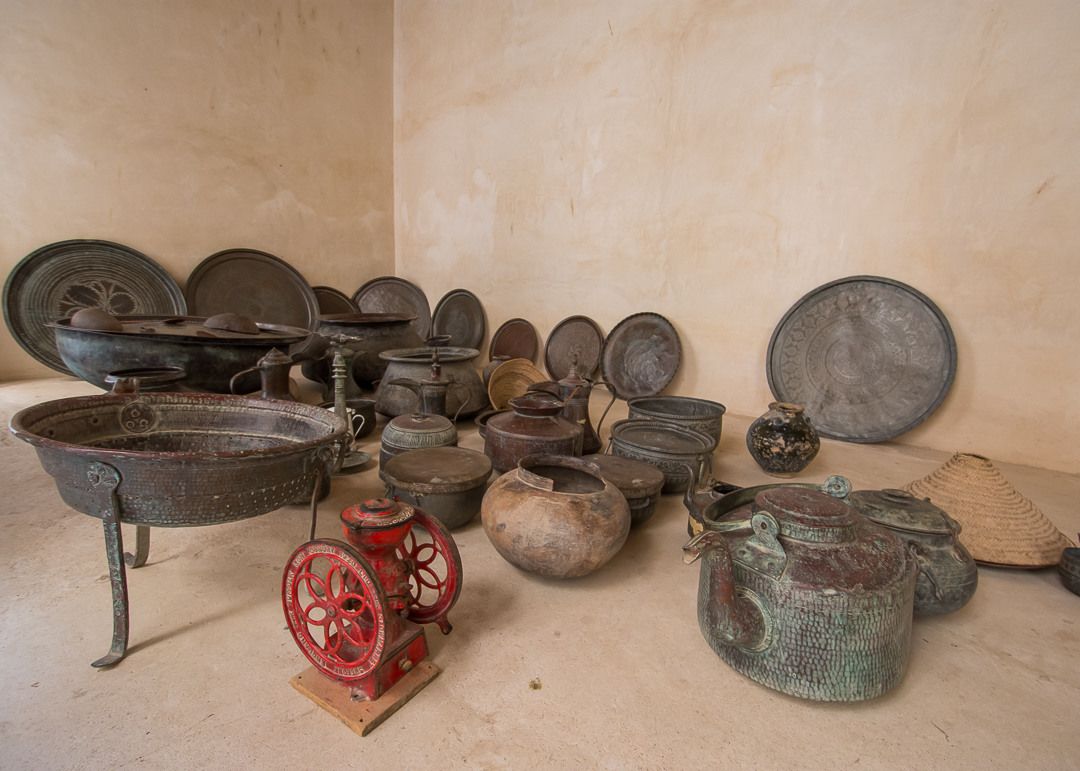
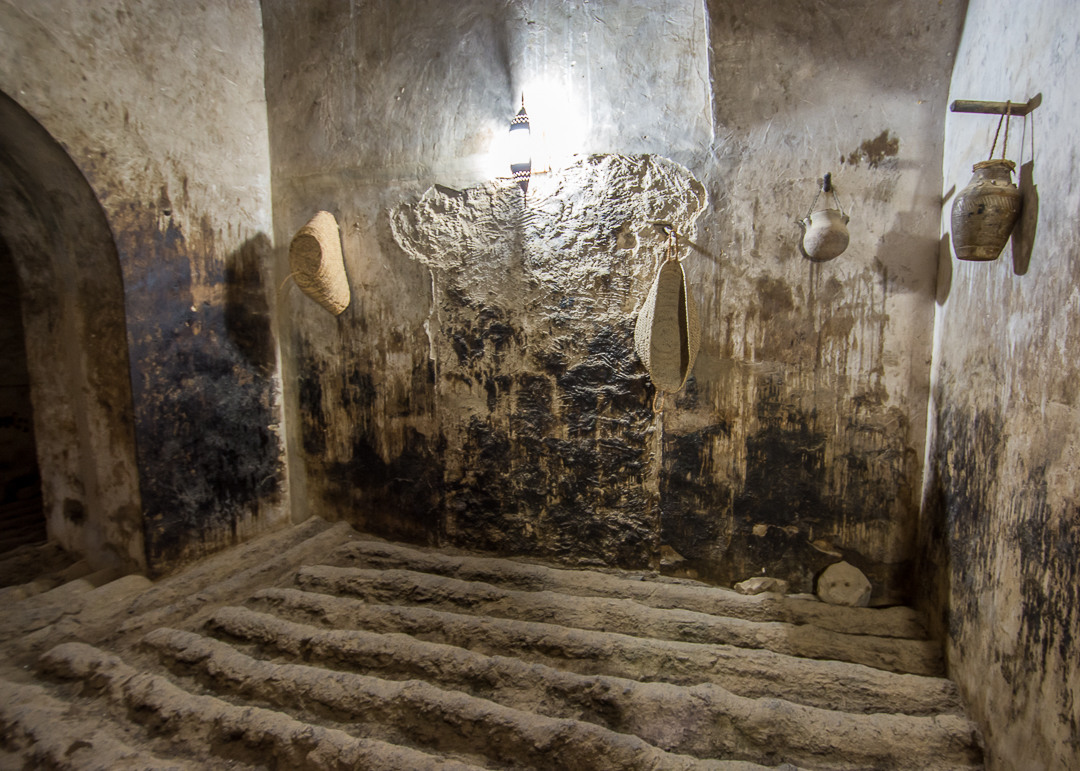
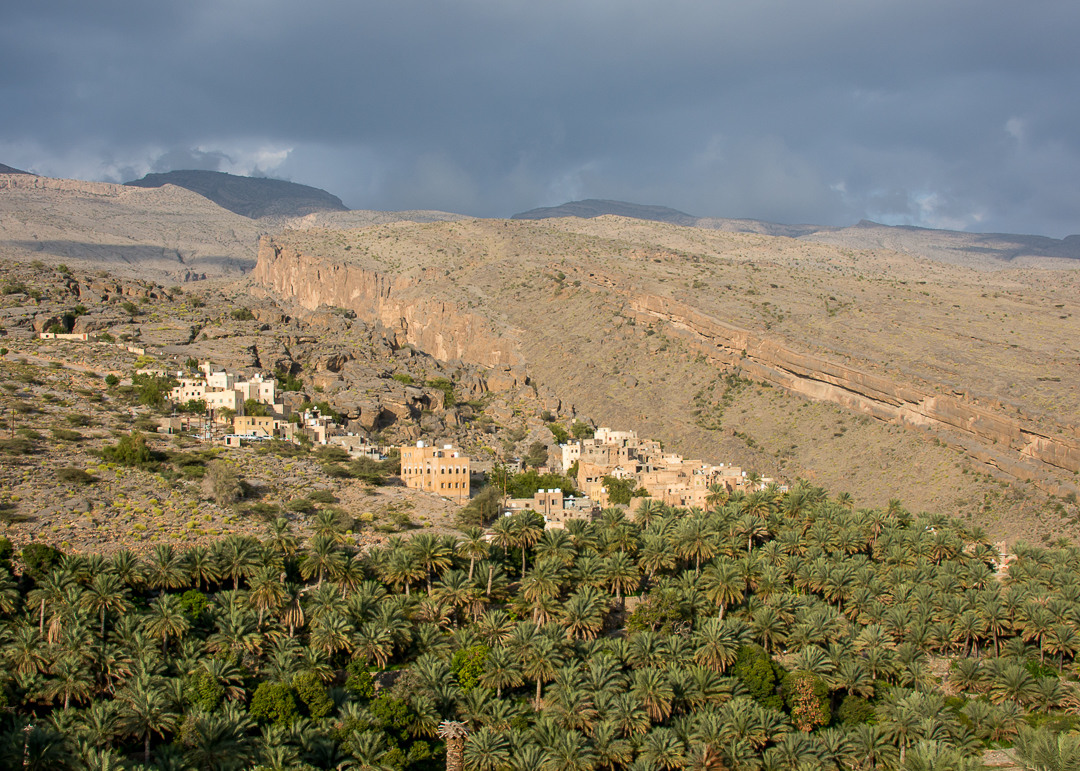
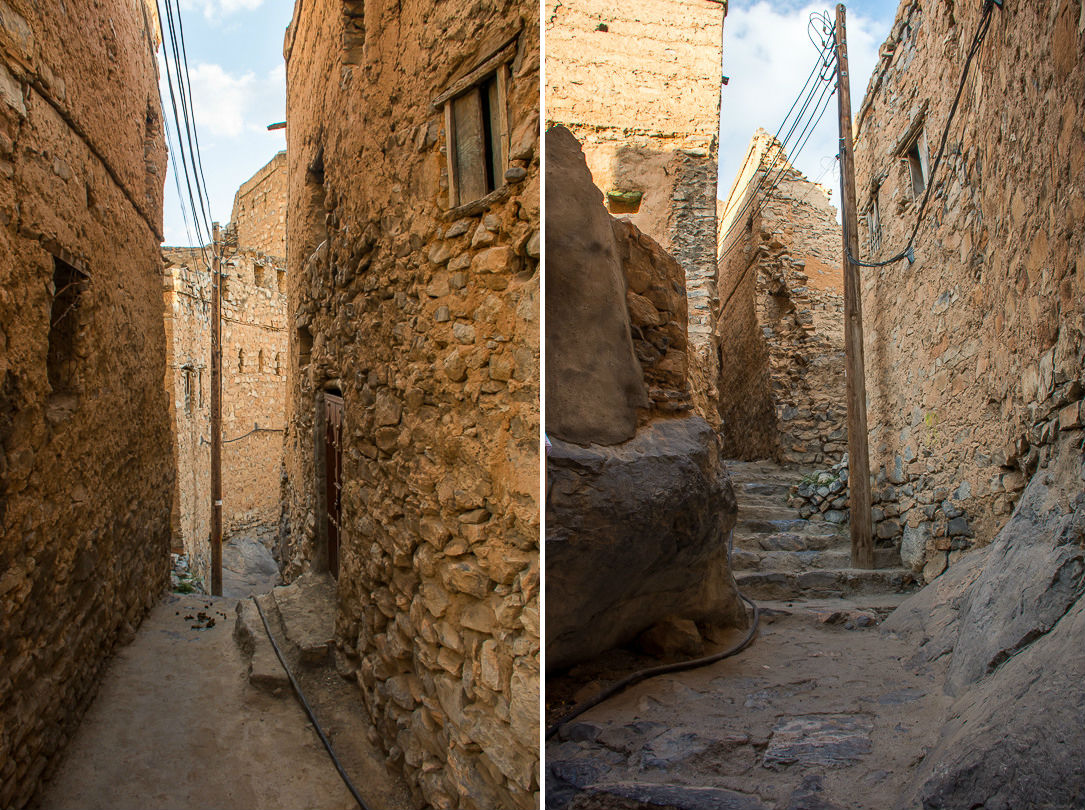
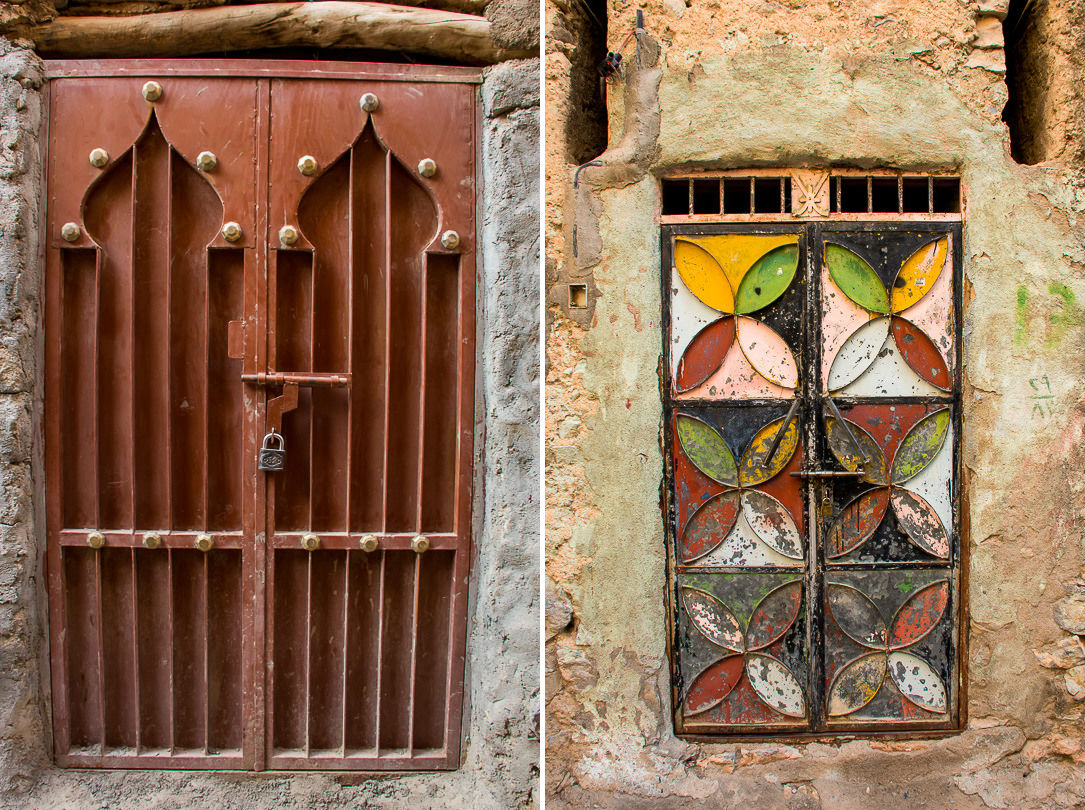
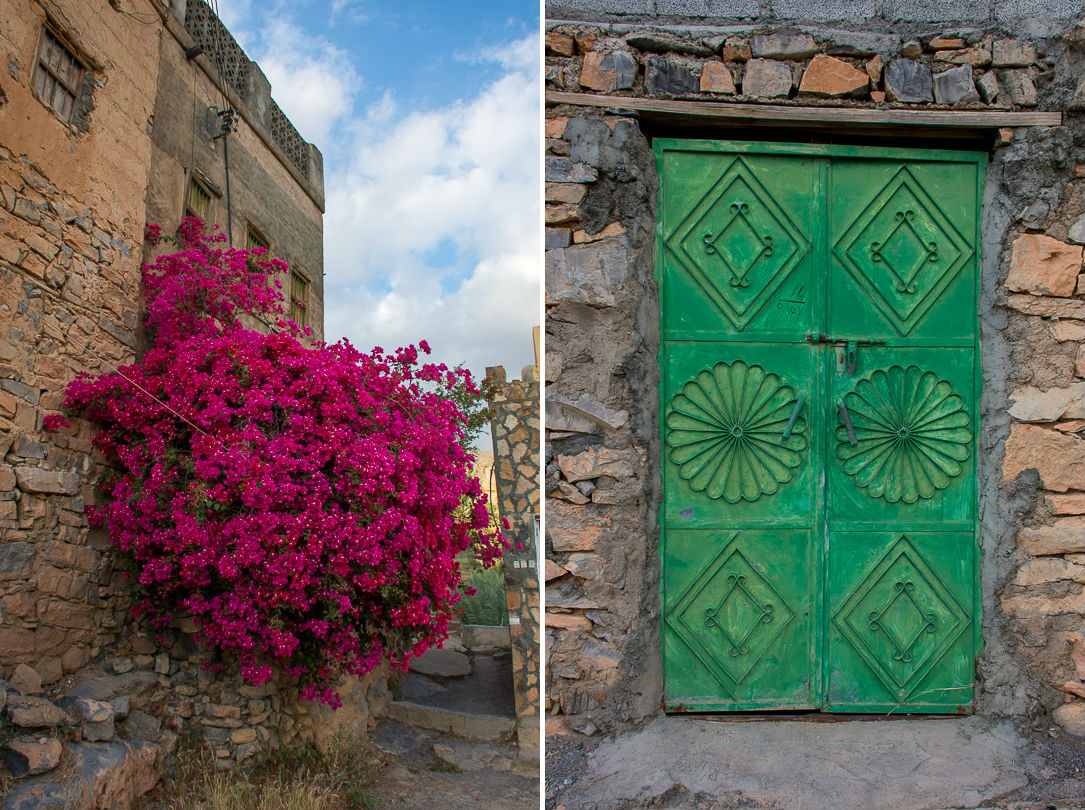
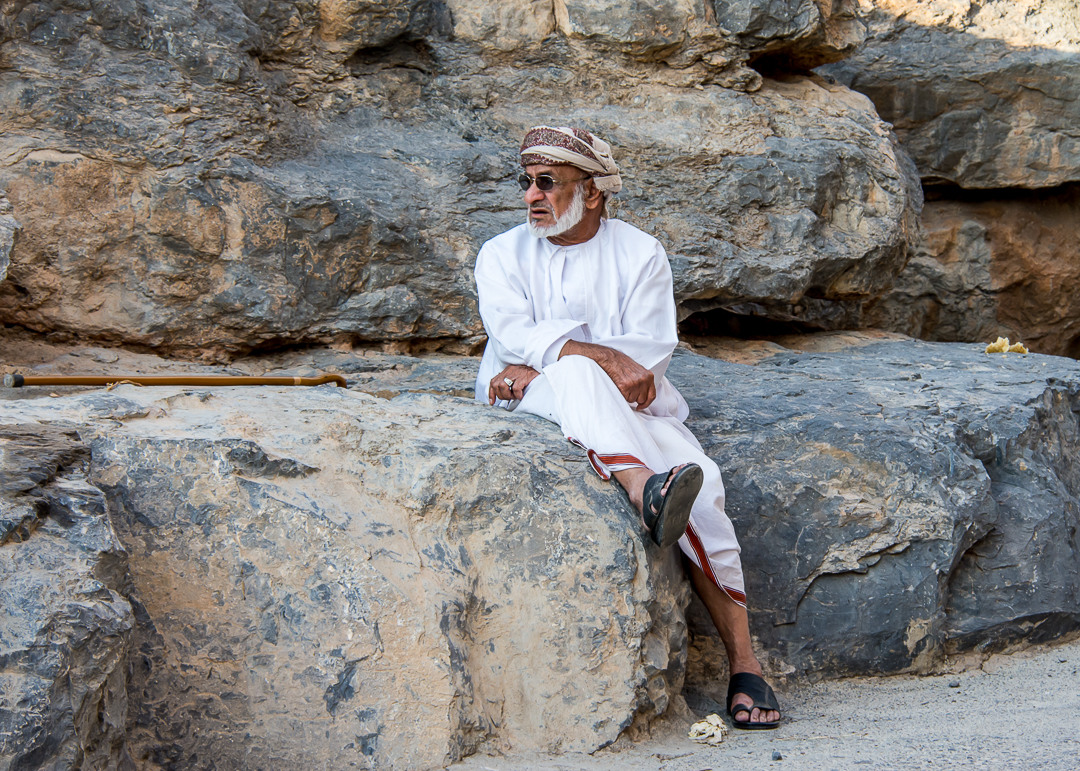
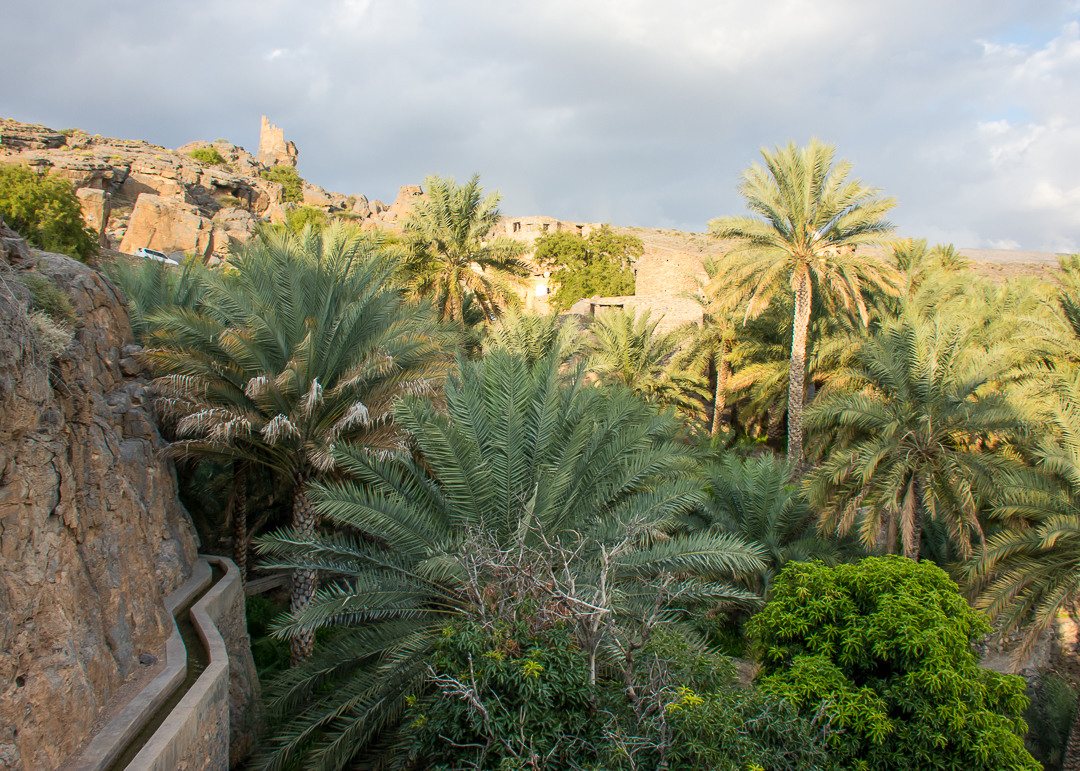
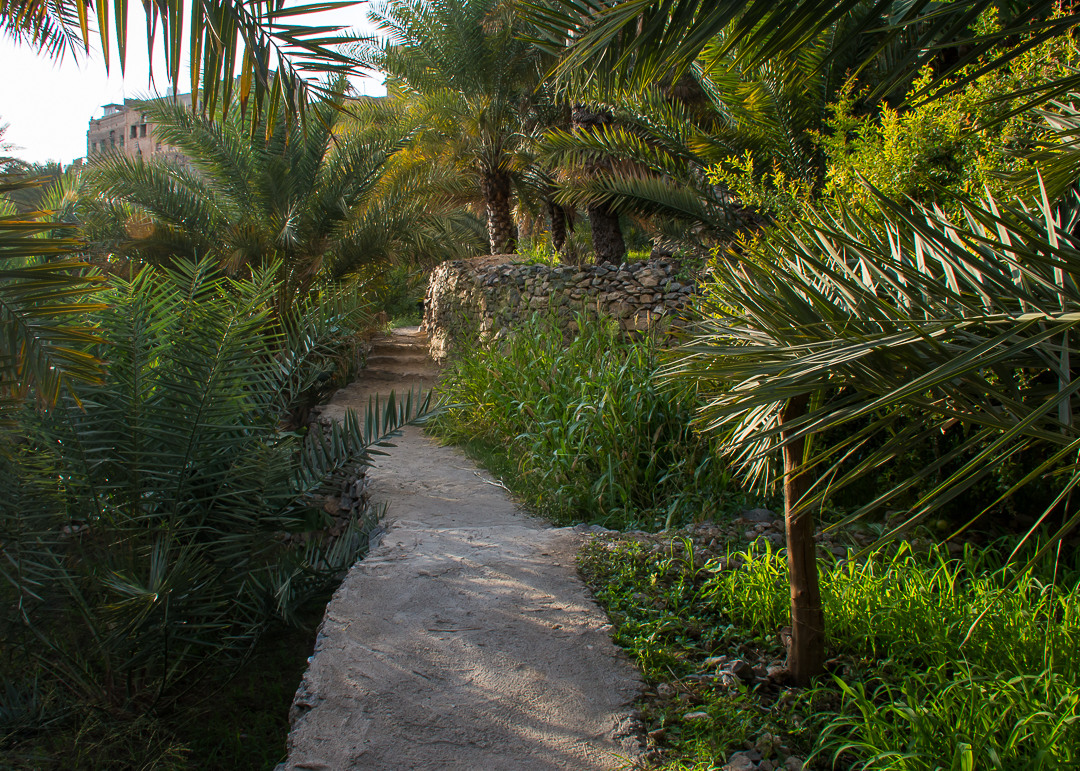

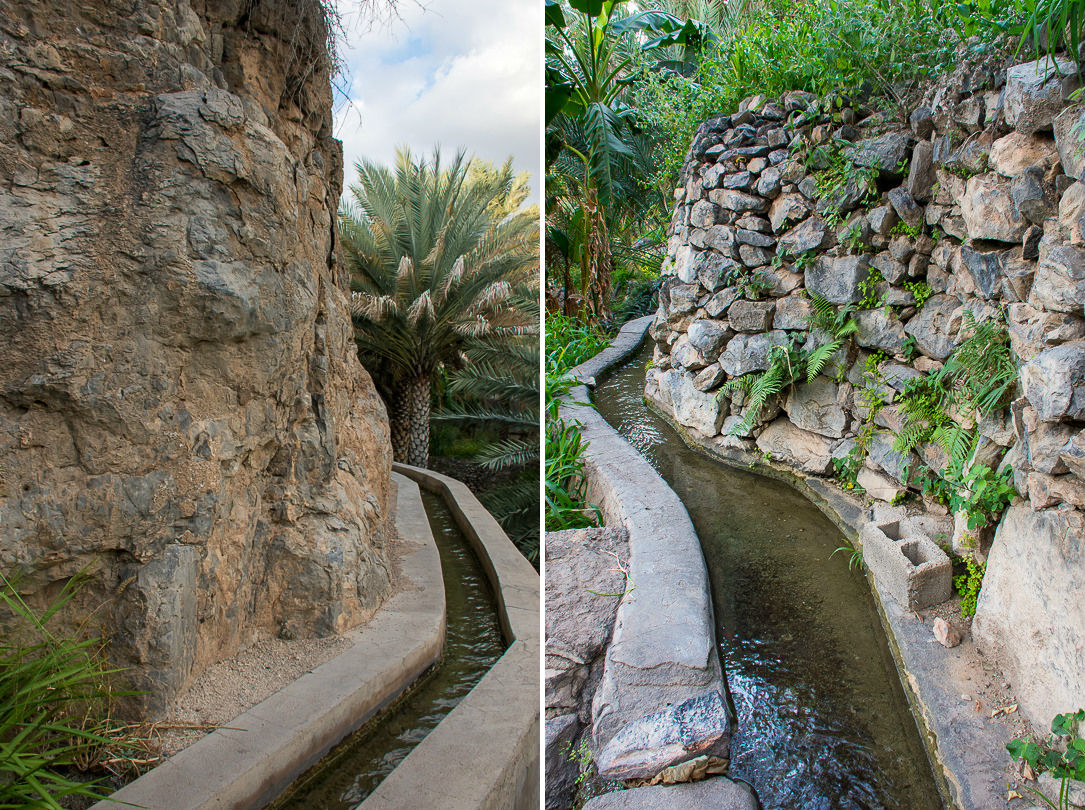
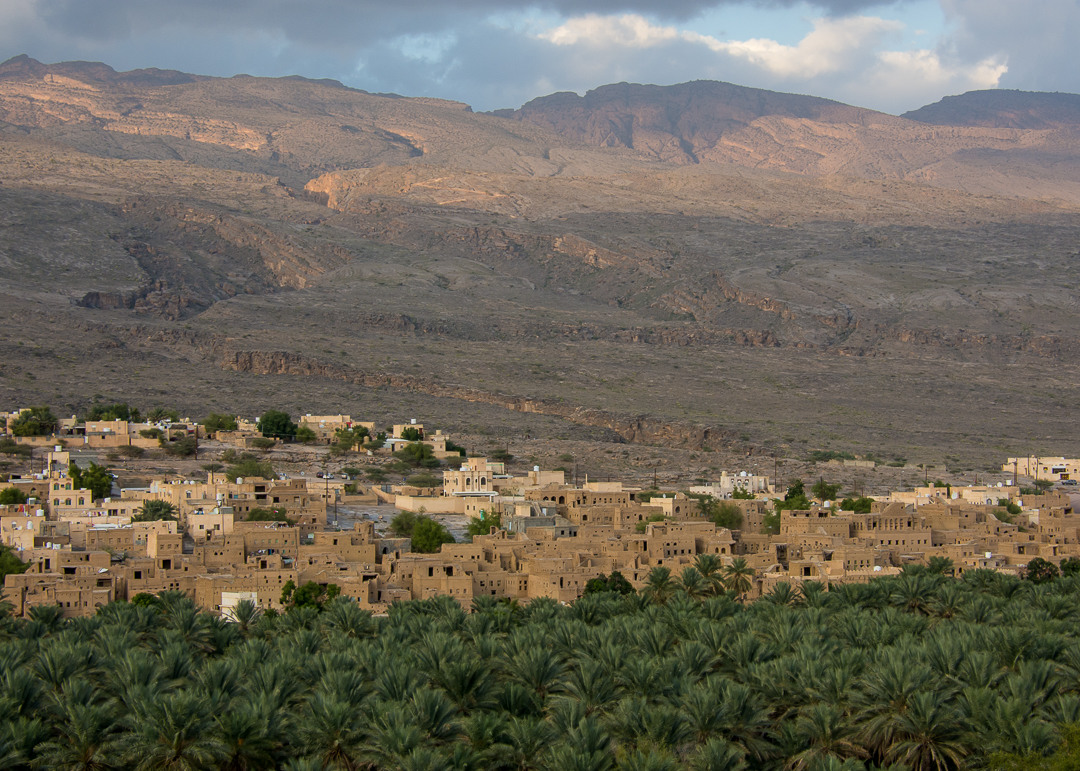
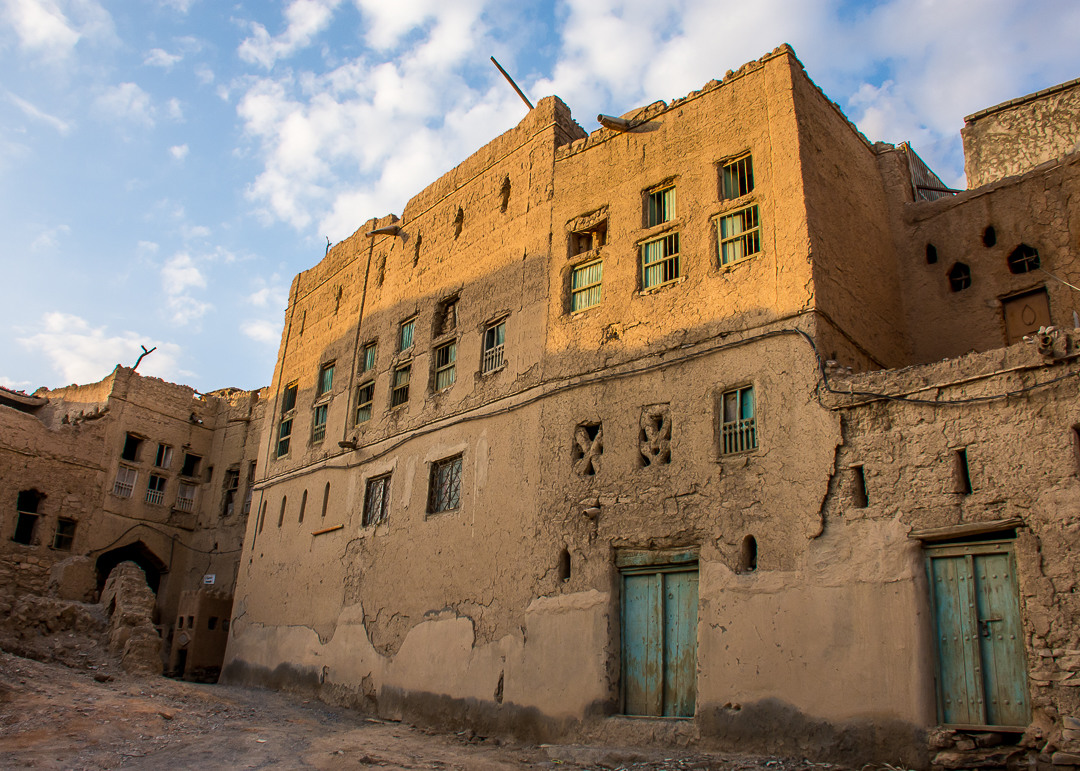
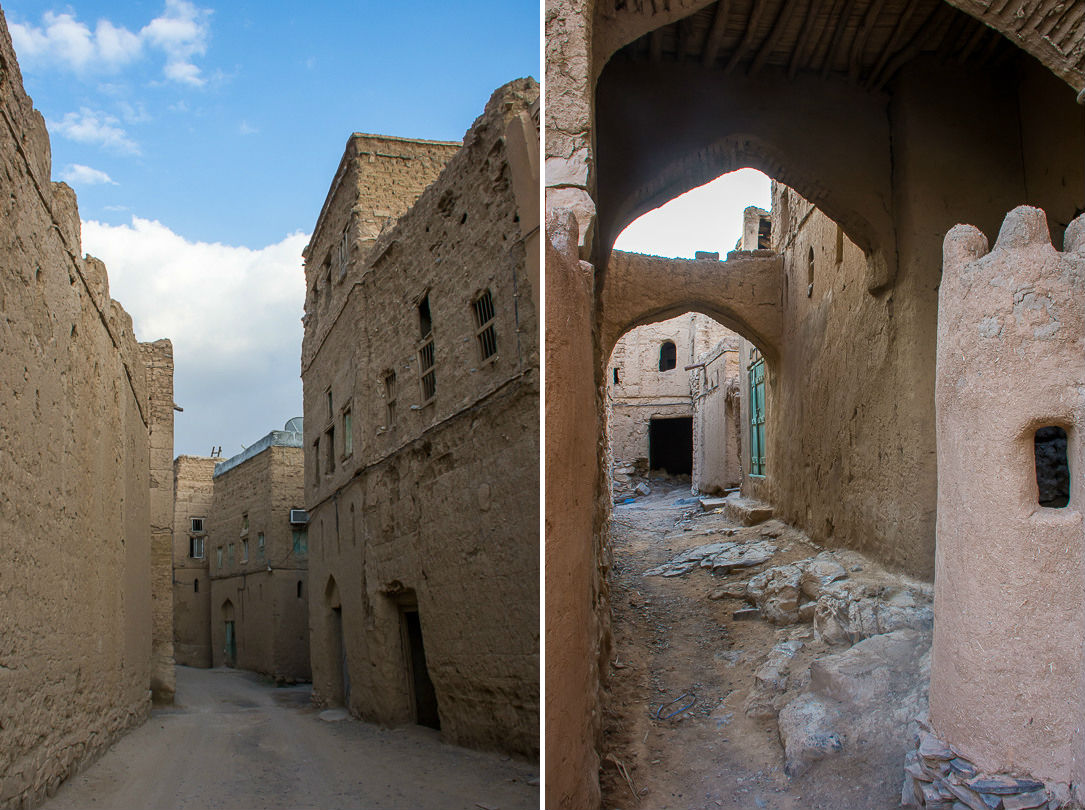
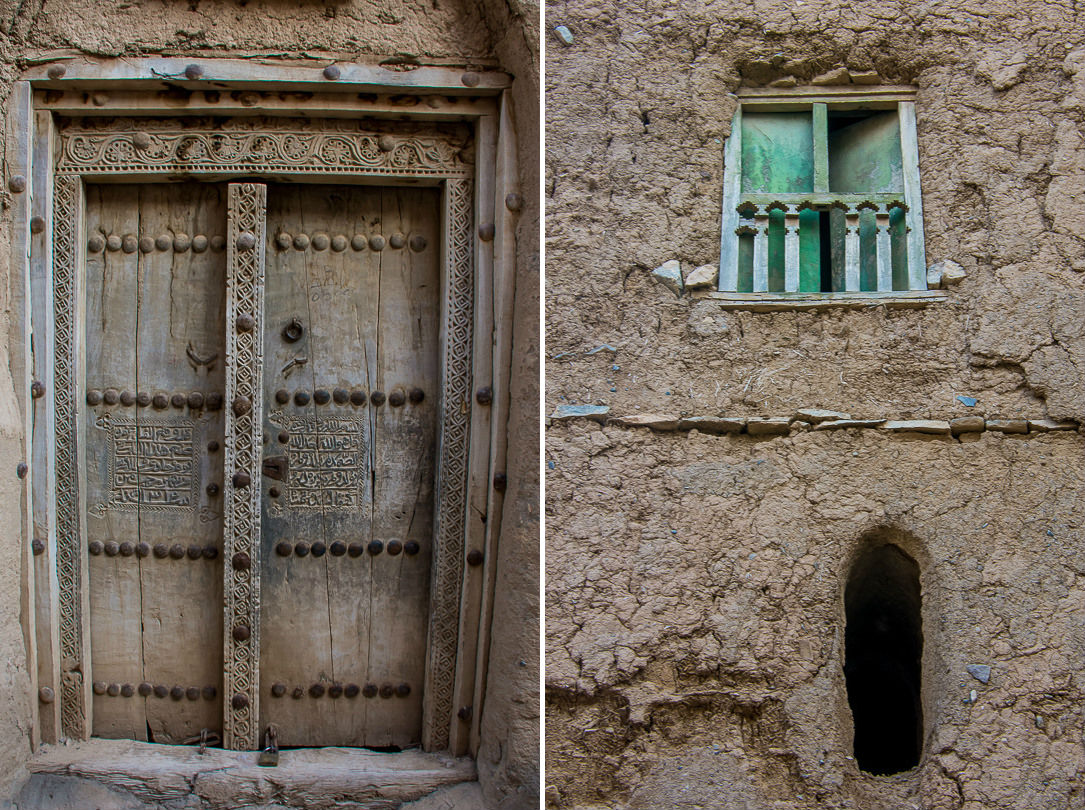
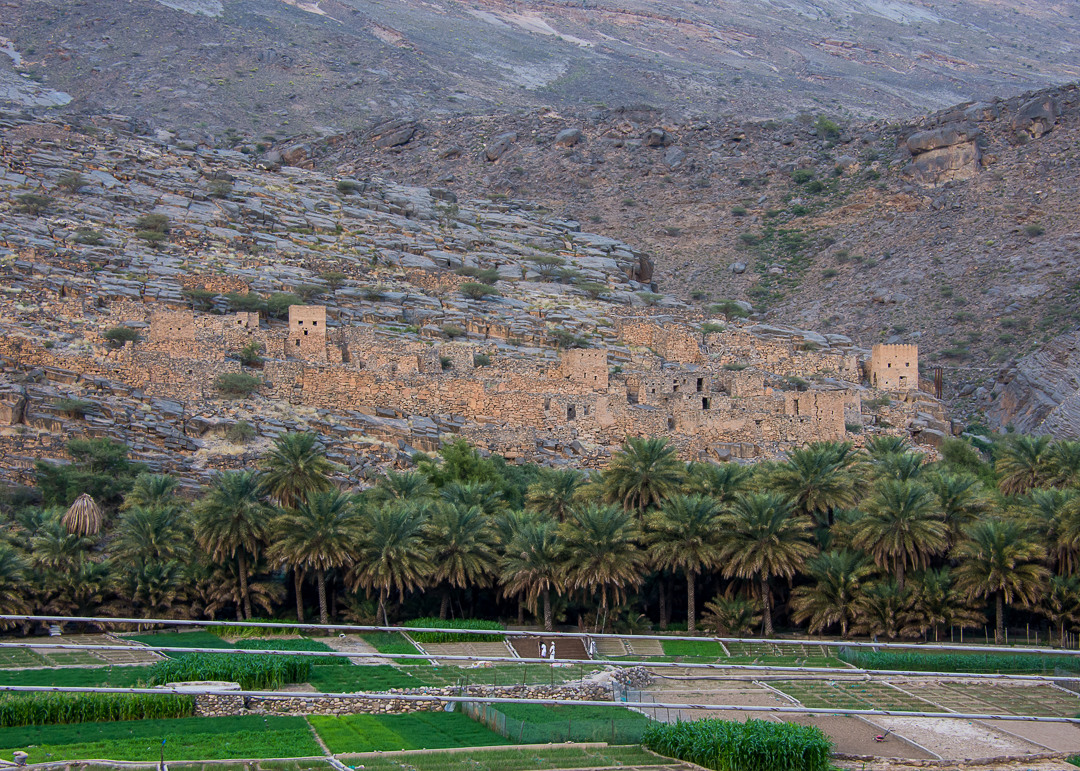
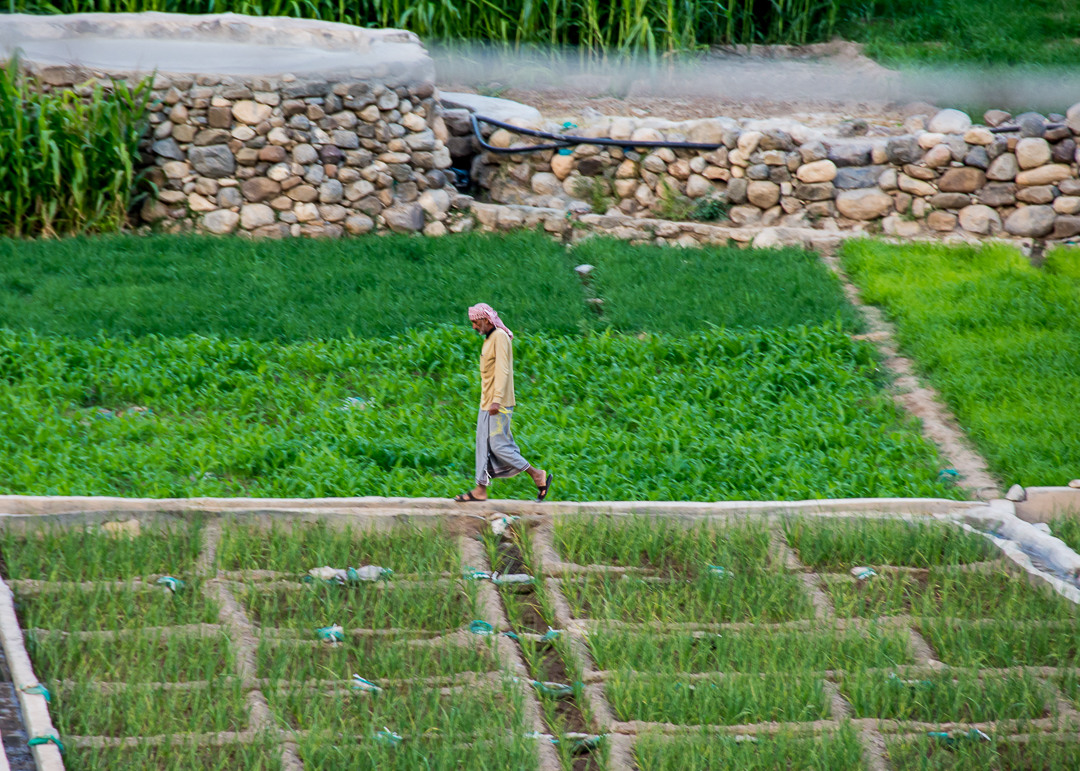
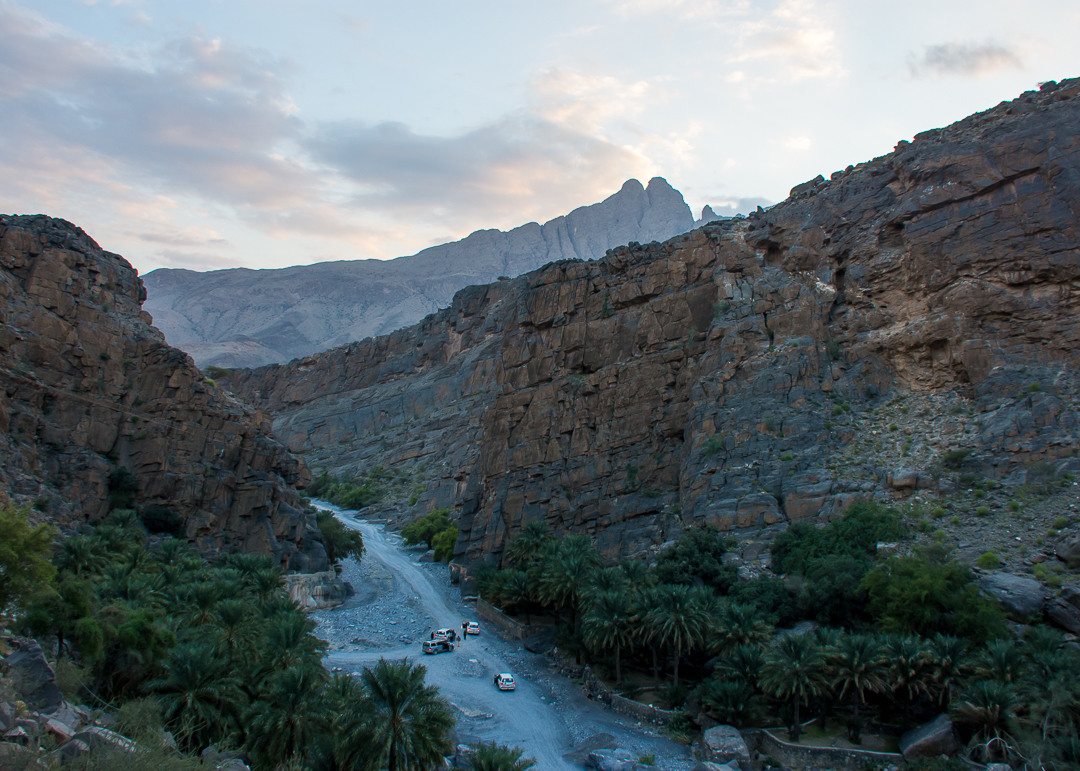
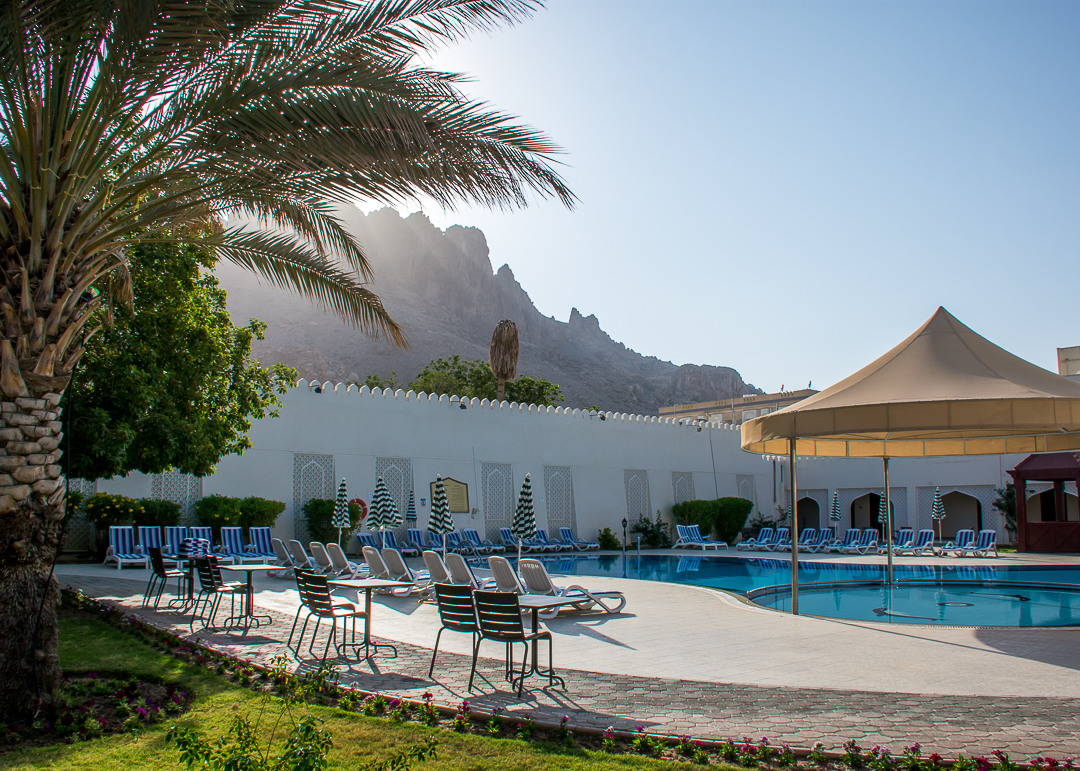
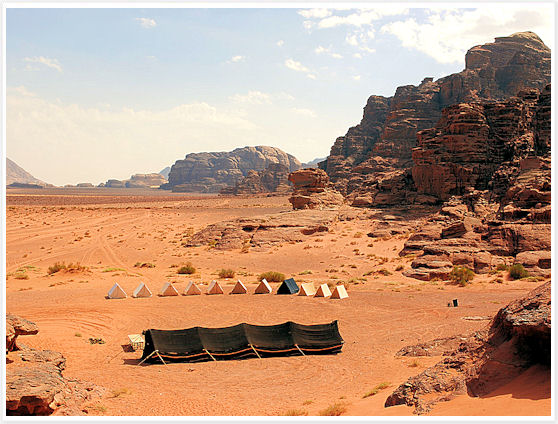
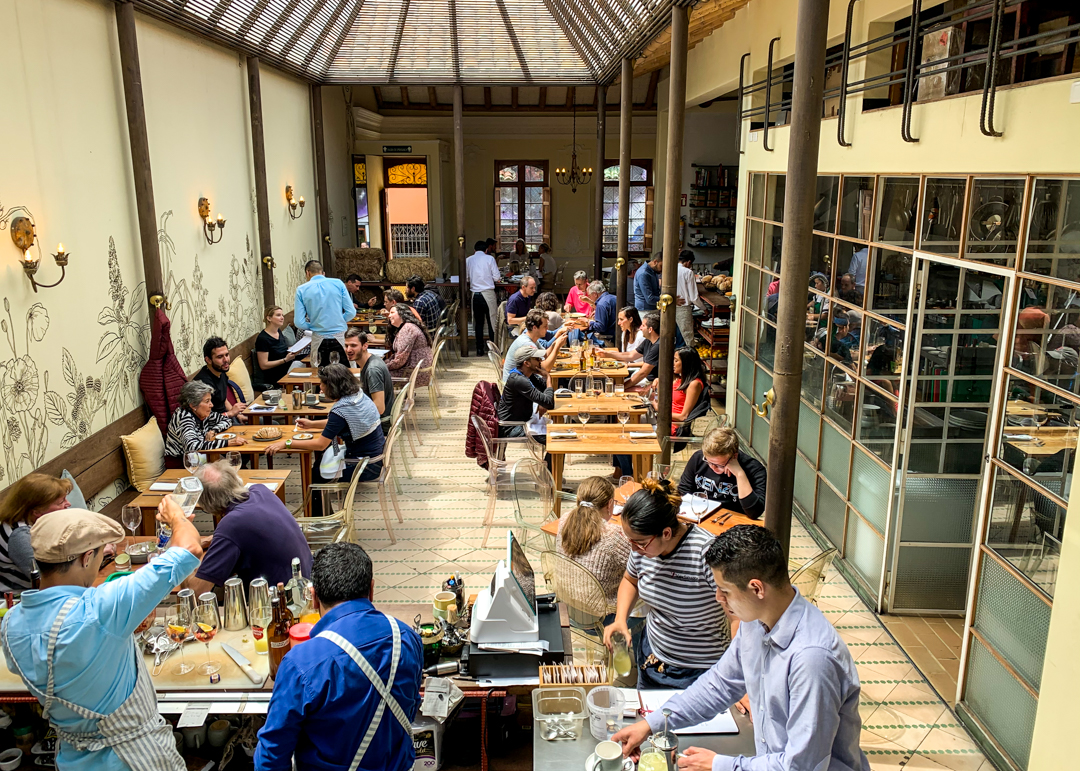
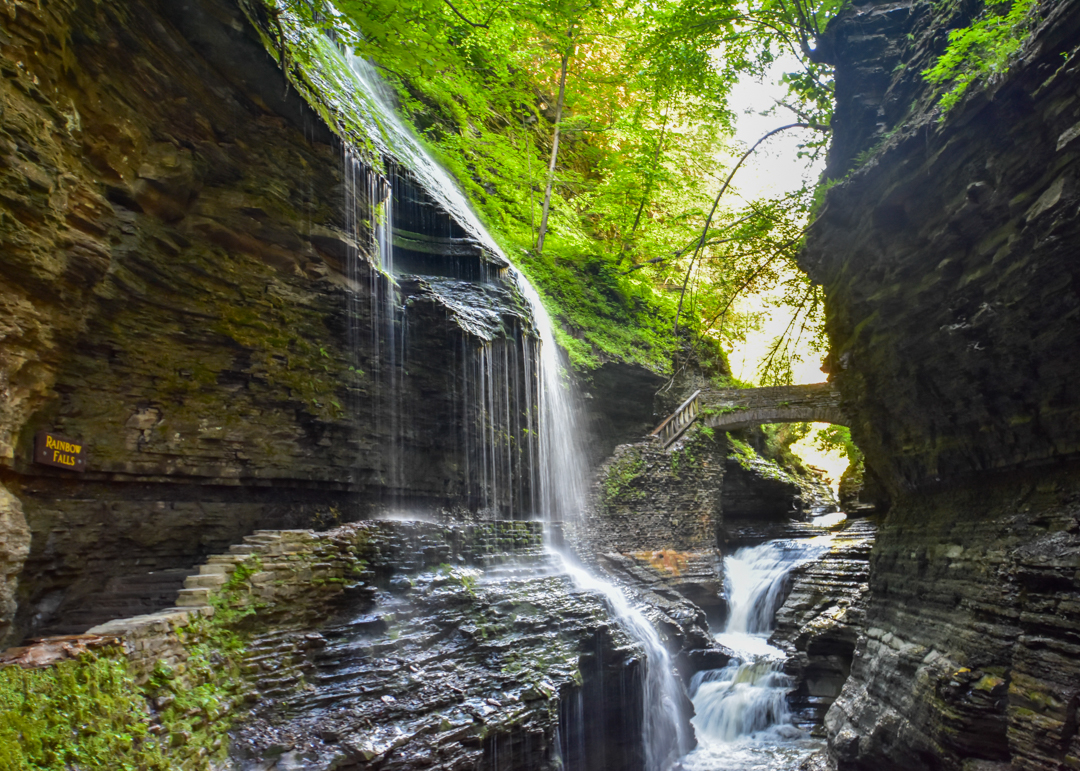


WOW as usual great post and amazing photographs I do so like seeing more about you and the author photo is a good one. Brava. But I am struck by how Oman looks as if every inch of ancient has been scrubbed into a Disneylike appearance. I too travel often hence the resin I so value your opinions and images, and I haven’t seen a fort or mosque look as if it had just been constructed. Very strange, as if the traces of ol times are clearly erased to say, only the newest is here in our modern country. A tad sad, no?
Again thanks for all the great information. It did make me miss North Africa and the Middle Eastern wonders.
Thanks Wicki! Indeed, they did scrub off the old dust massively and you’re left with pristine versions of what once was, a bit sad it’s true… Much different than what I’ve seen in Jordan for example and like you I do prefer a more authentic feel. They’re clearly riding the wealth wave and proud to show a more modern side of their country which I can also understand.
Hi Sandra, Lovely photos! I came across your article while researching Oman- seems you were able to get off the beaten path a bit. I’ll be going to Oman in January – I was wondering if you did this trip by yourself and/or how safe you think it is for a female alone to visit the villages like Misfat that you went to? Looks stunning. Love the pictures of doors/windows. Thanks in advance for any information you can provide.
Thanks, Marie! I booked a private tour with a girlfriend through Zahara Tours so we had a guide with us almost all the time except in Muscat. That being said, Oman is a super safe country and I wouldn’t have hesitated doing the same by myself. It’s one of the easiest of the Arab countries for a woman travelling solo and we hired a guide mainly to be able to see a lot in a little amount of time and also get a local perspective of the country. Hope this helps!